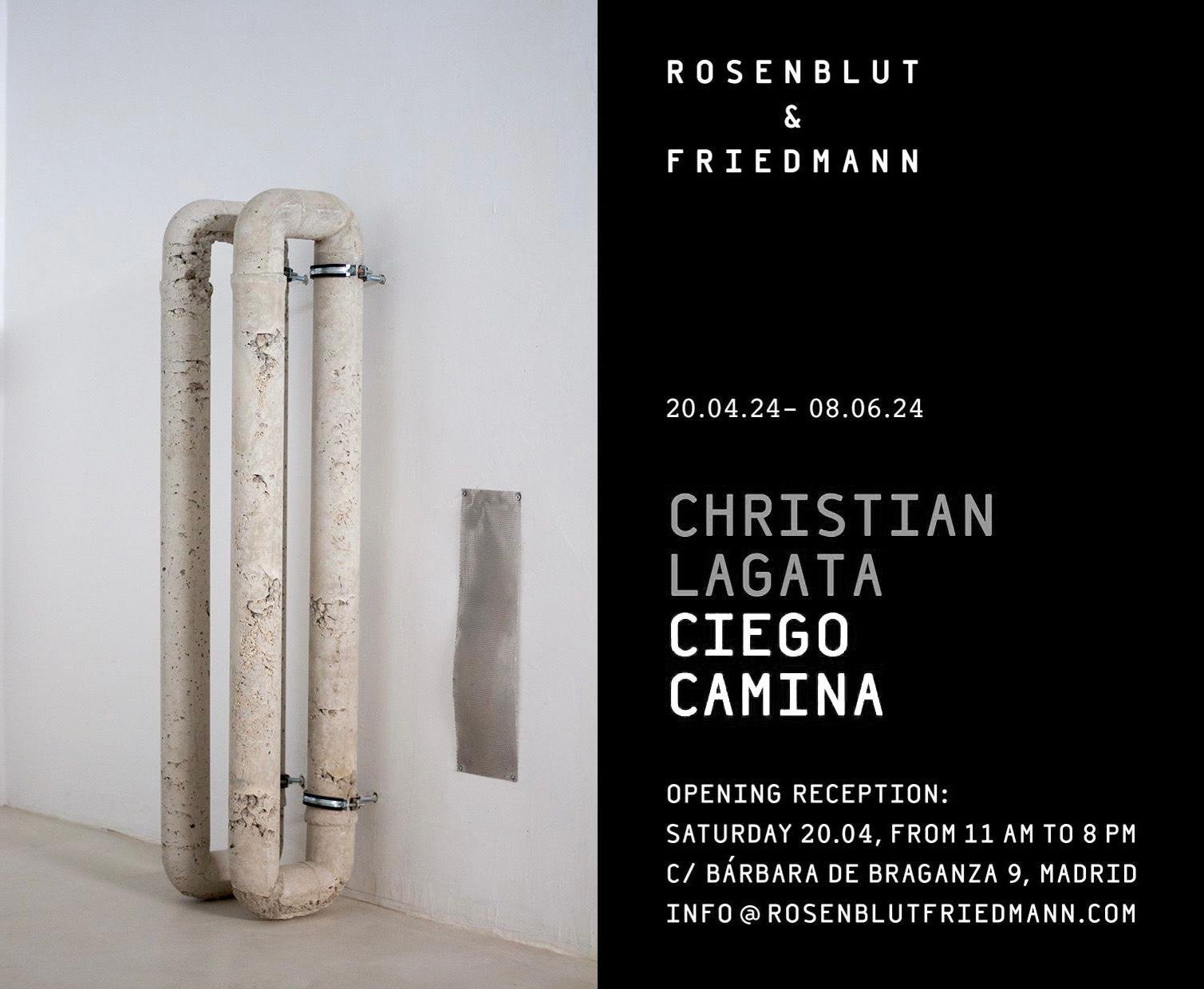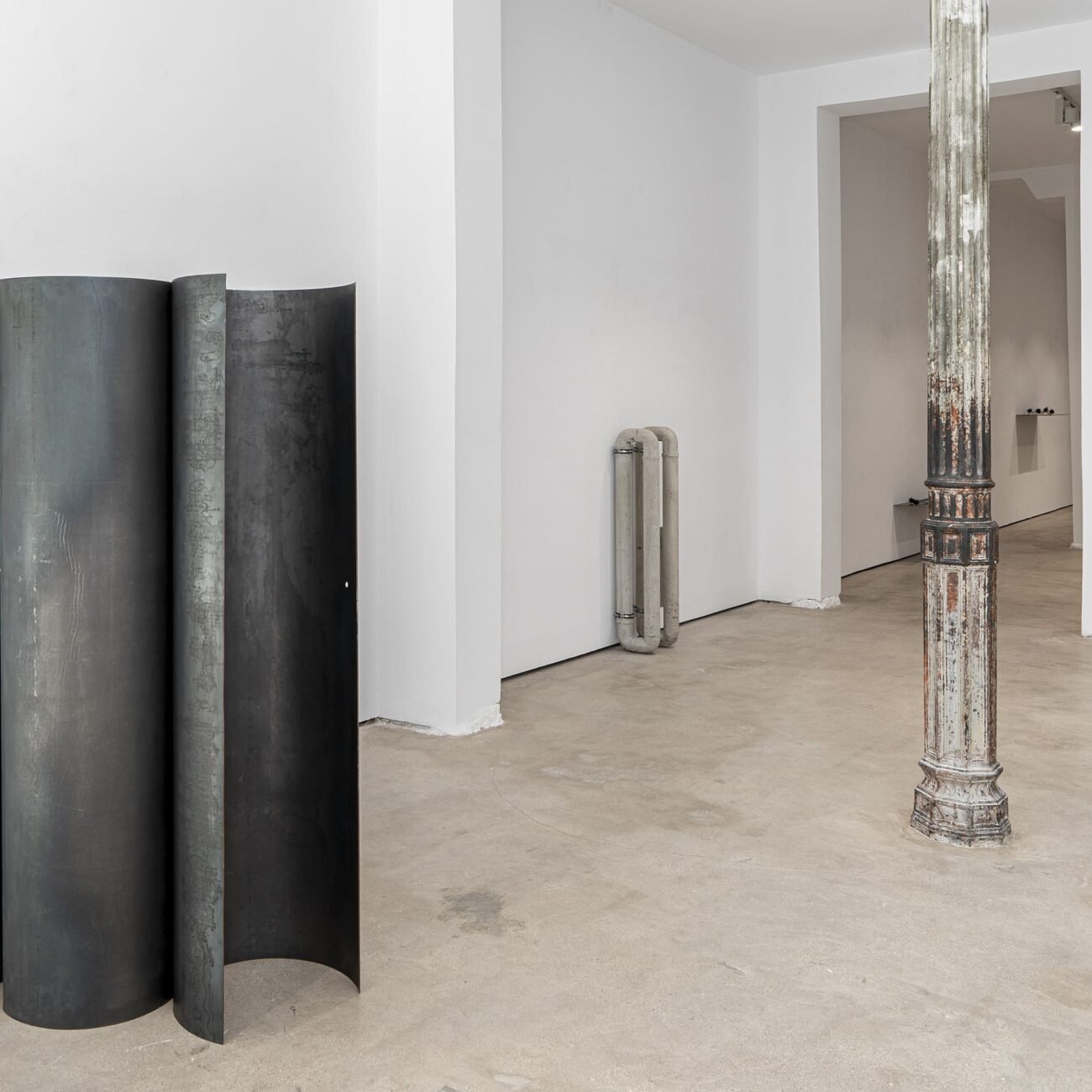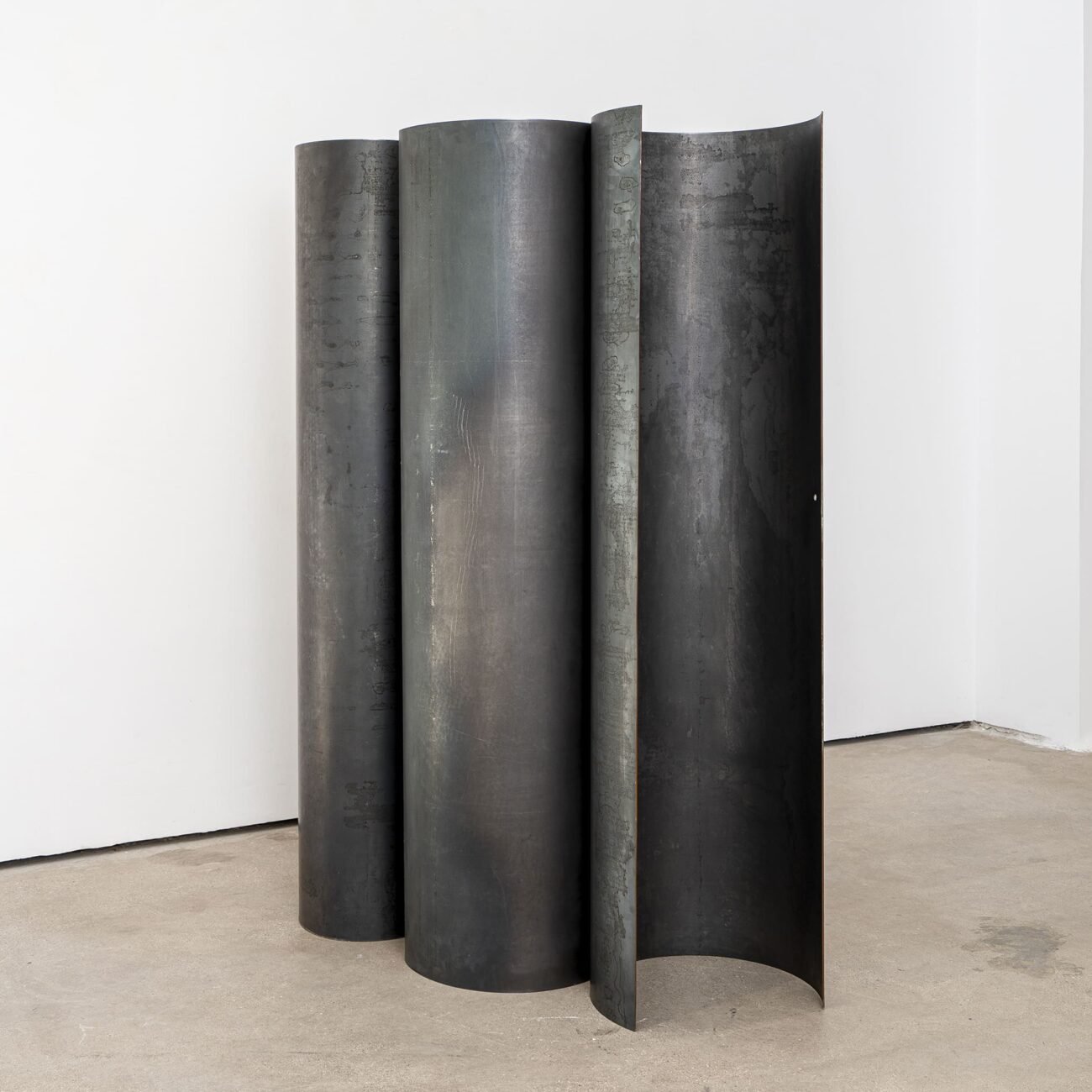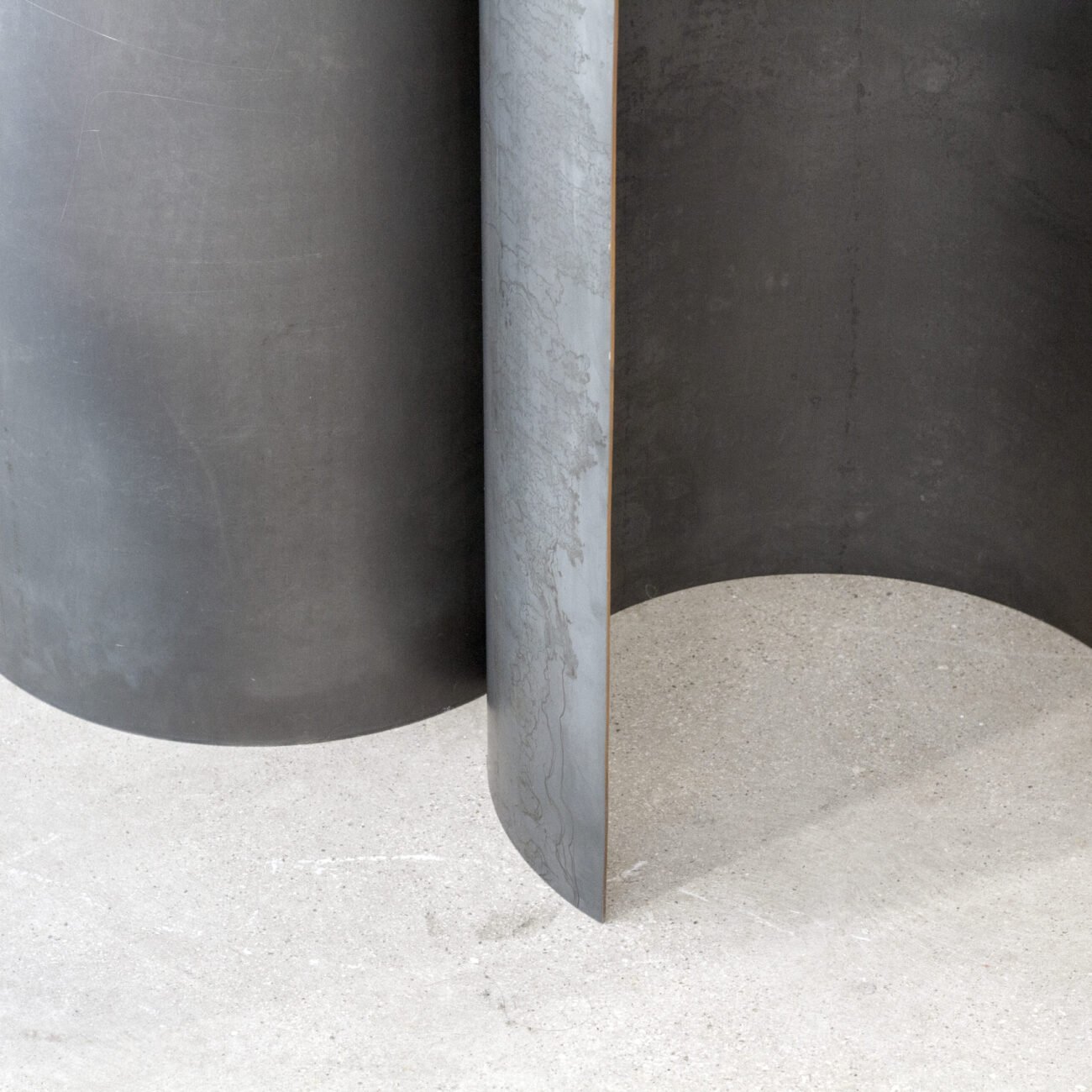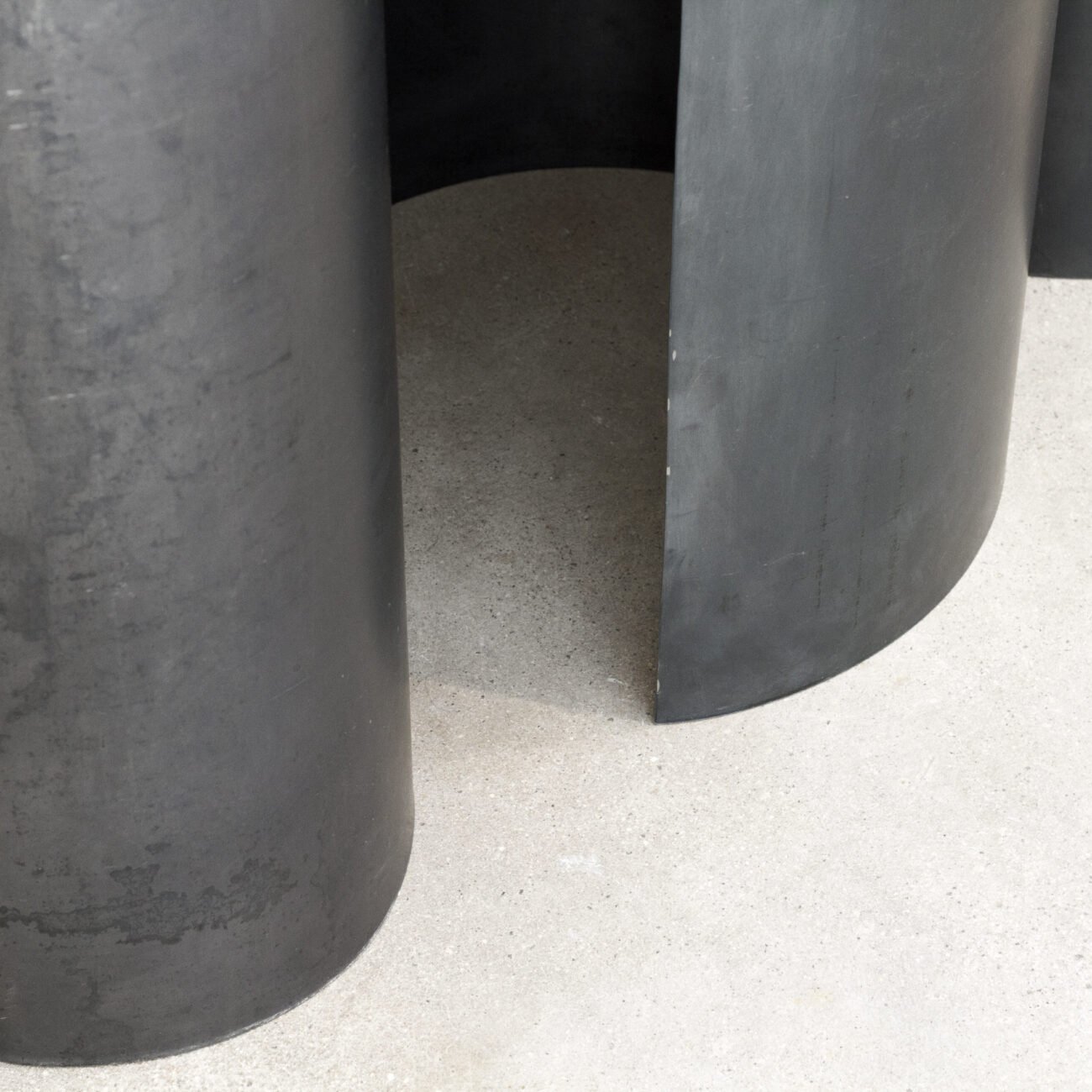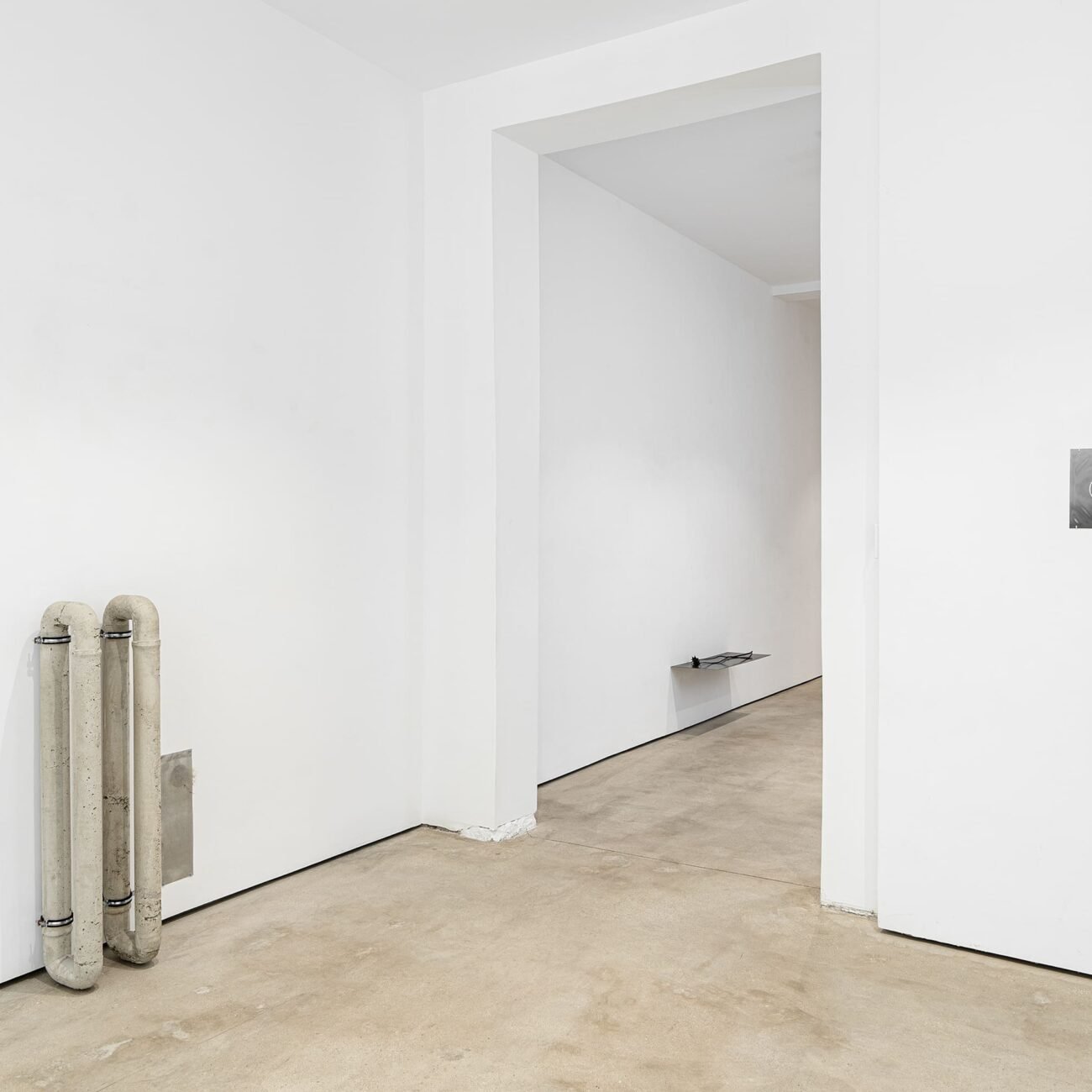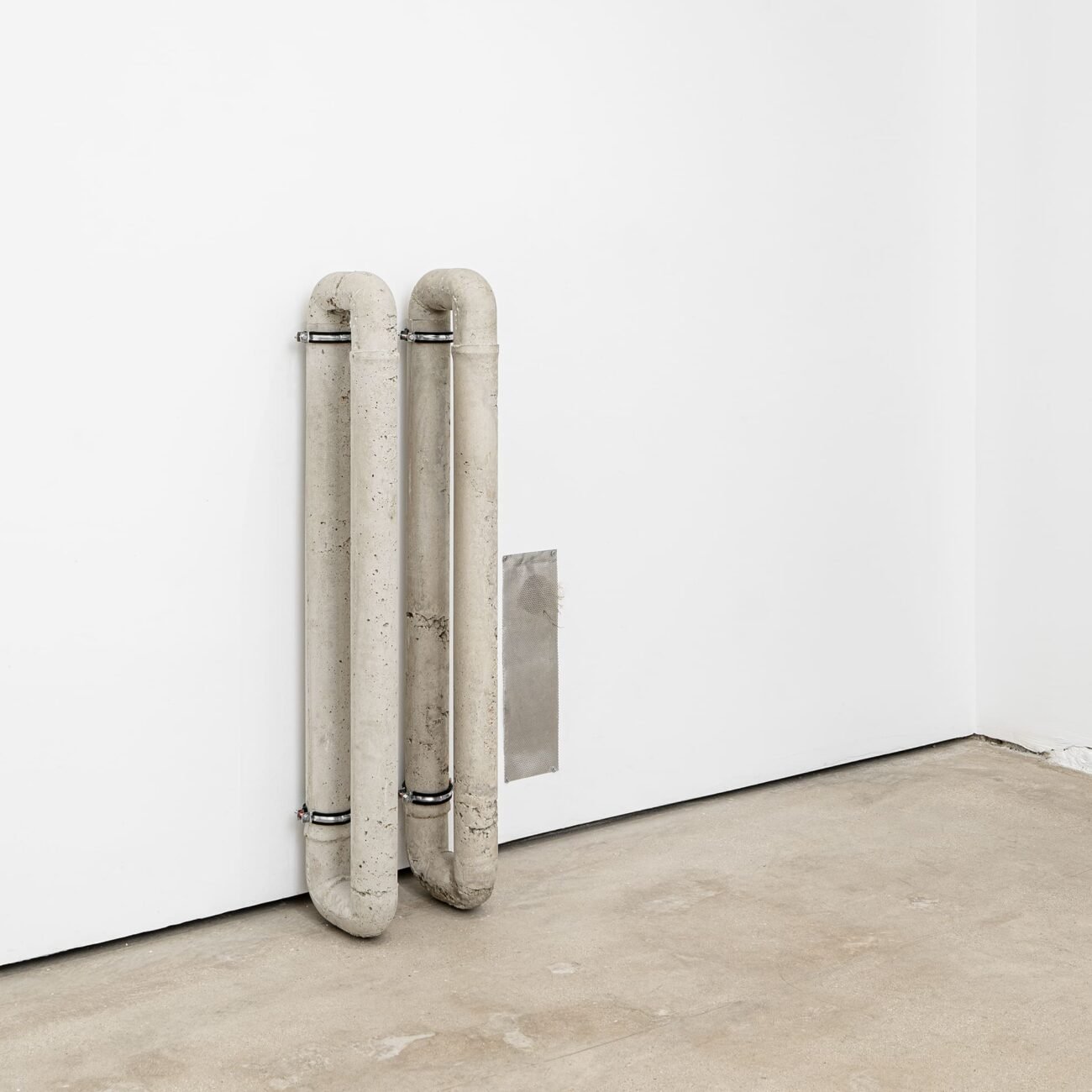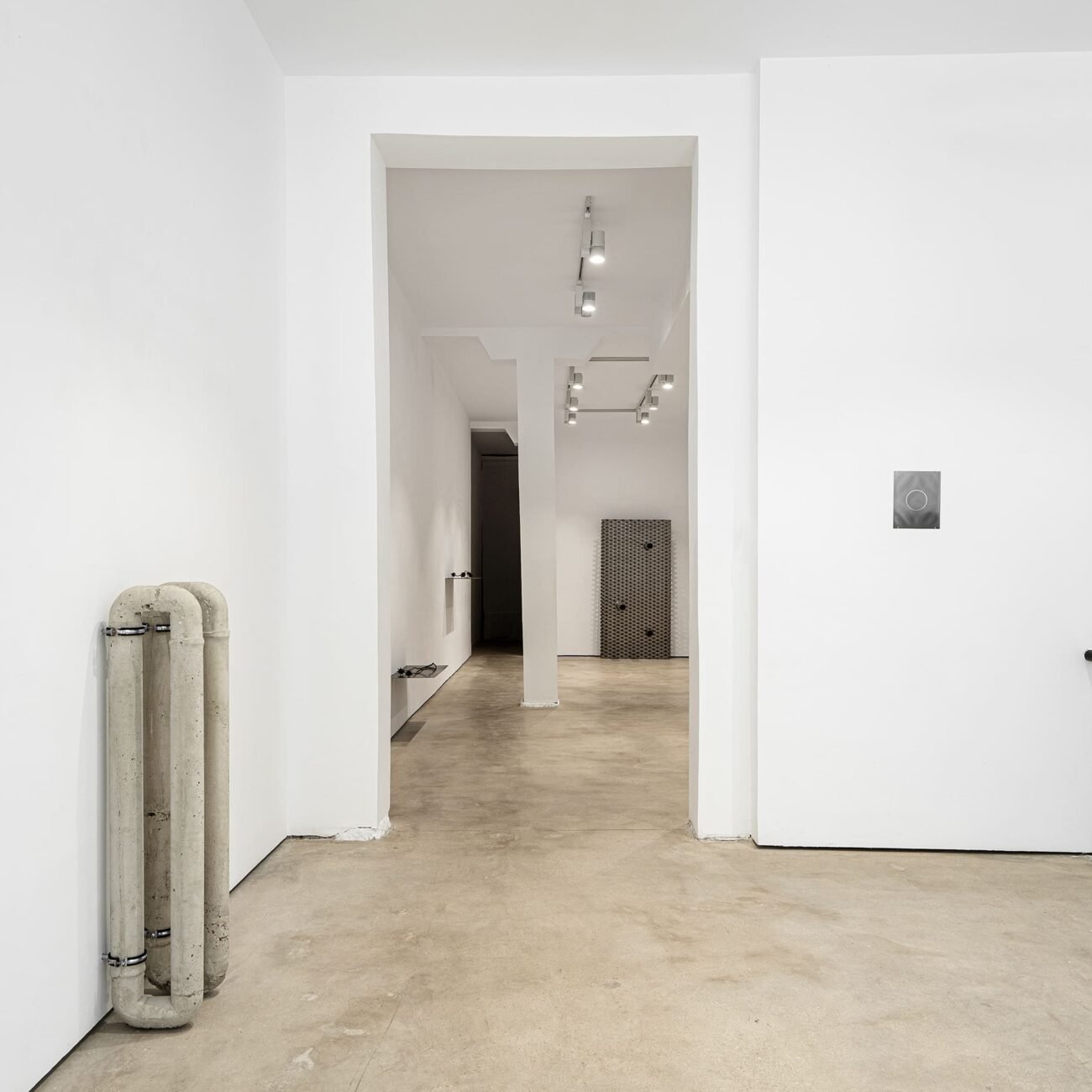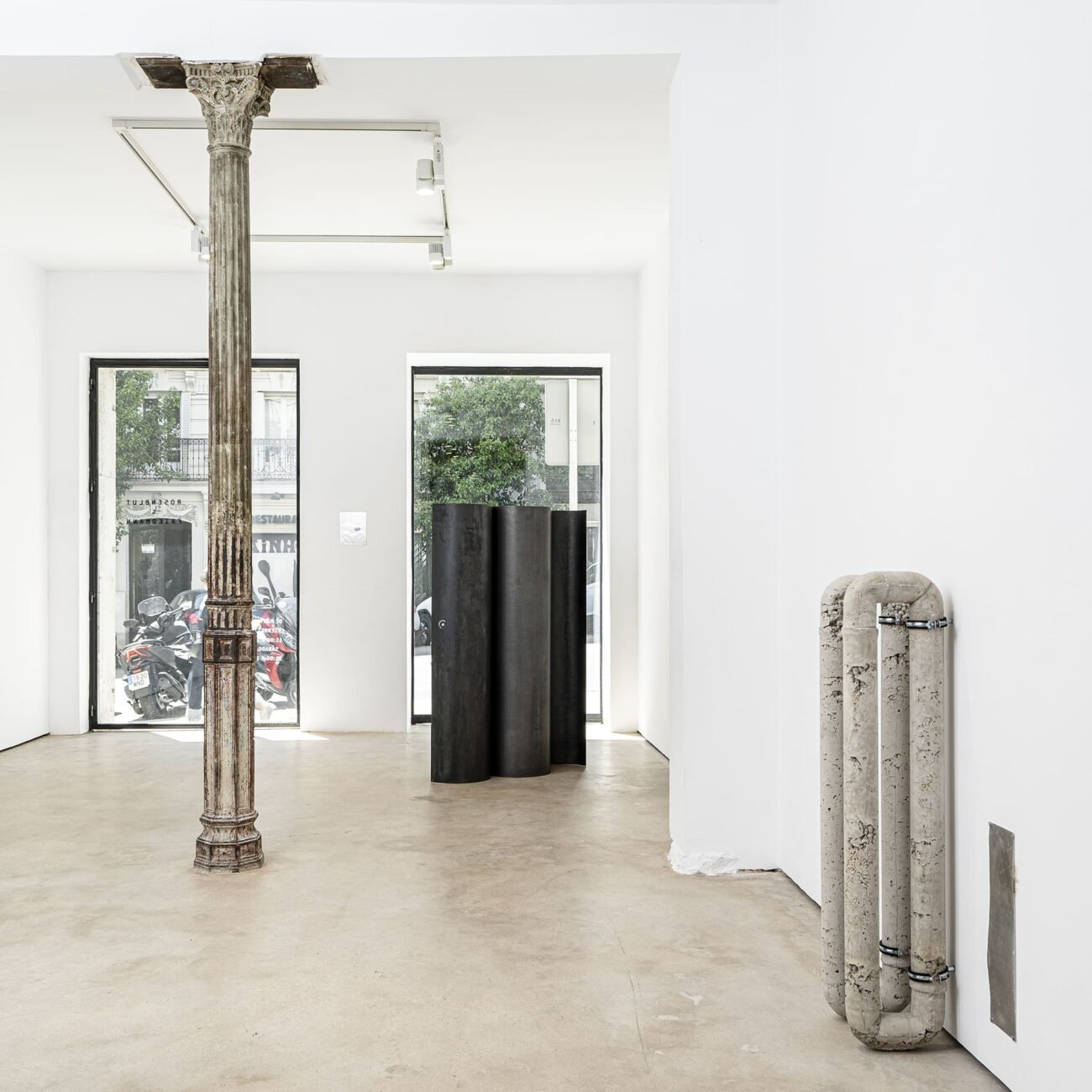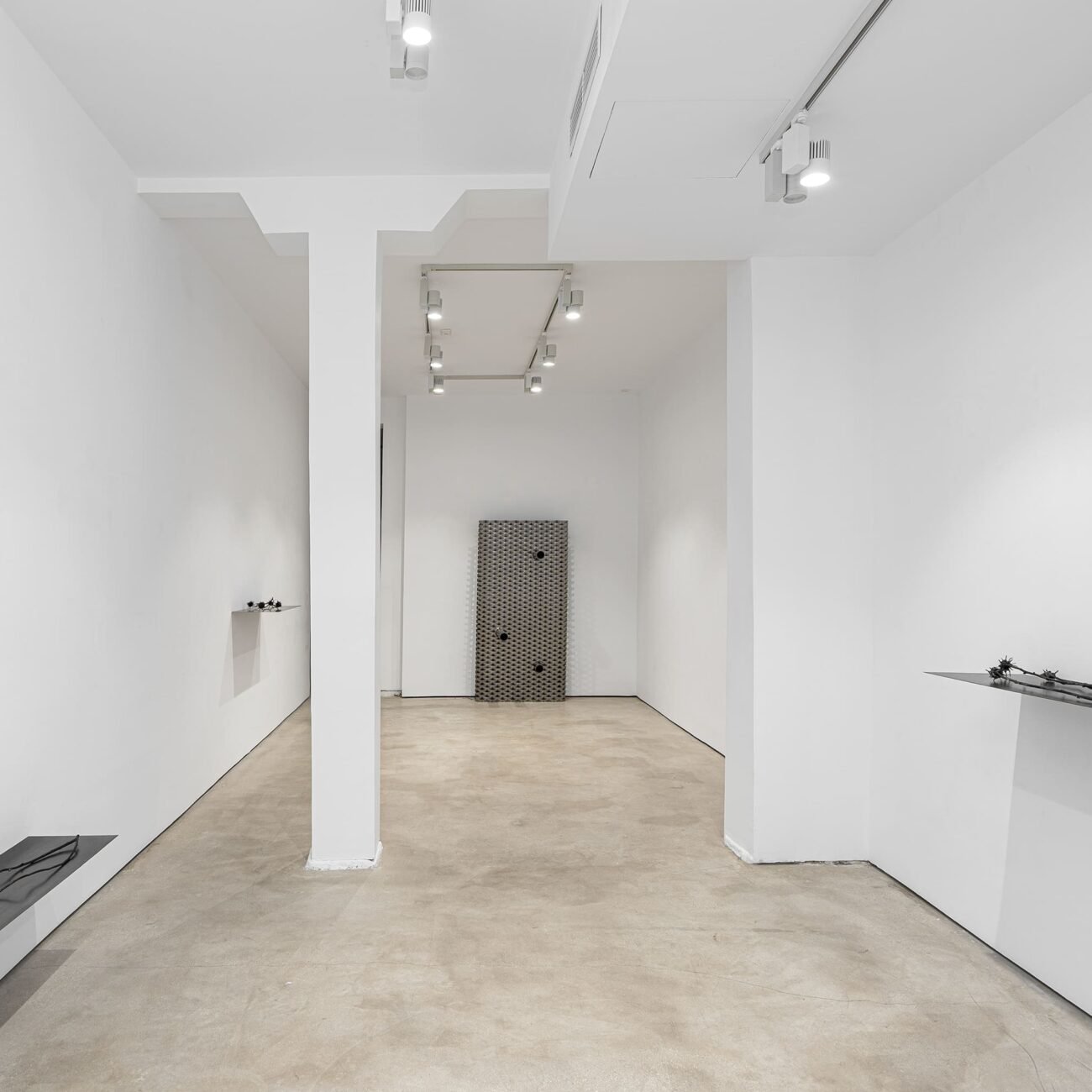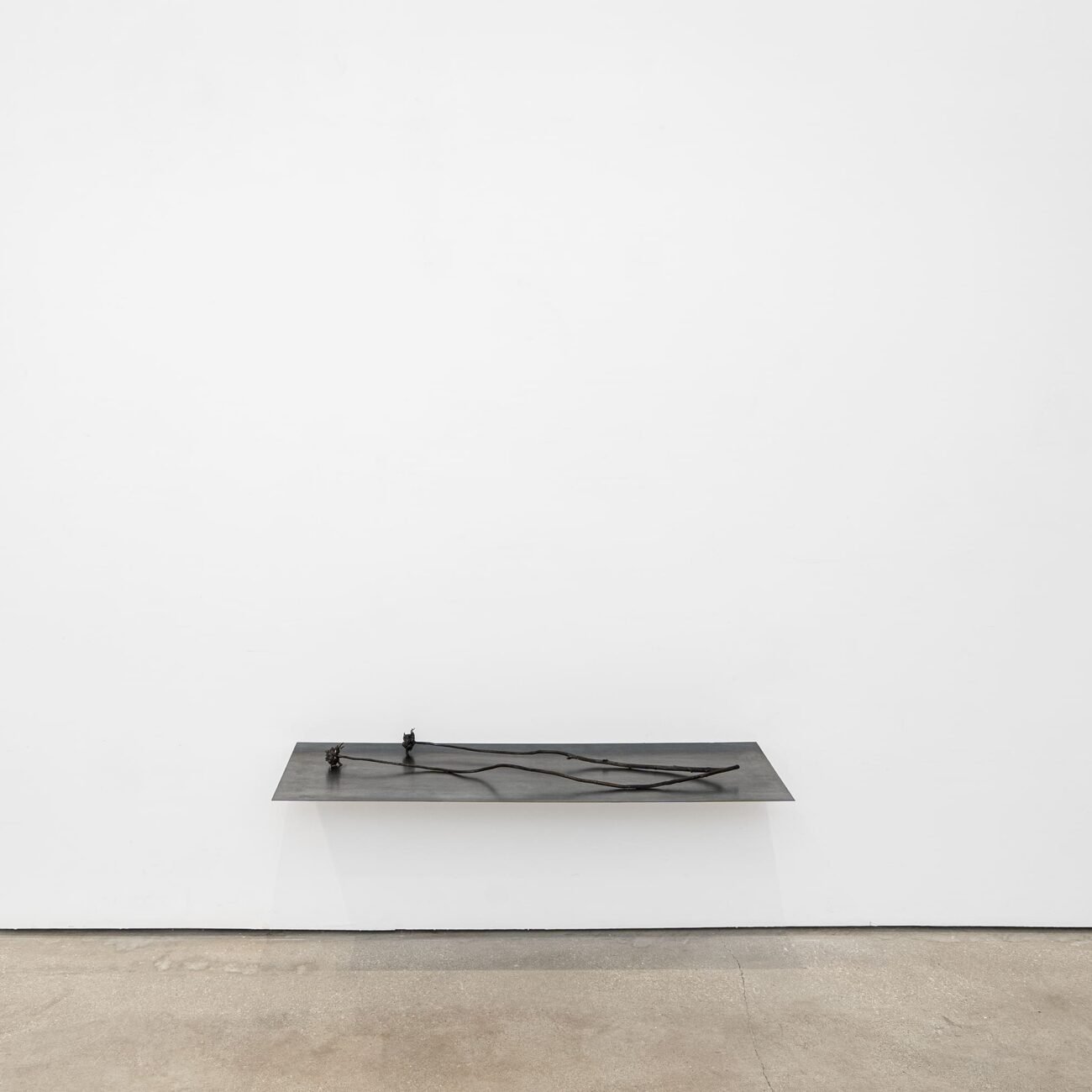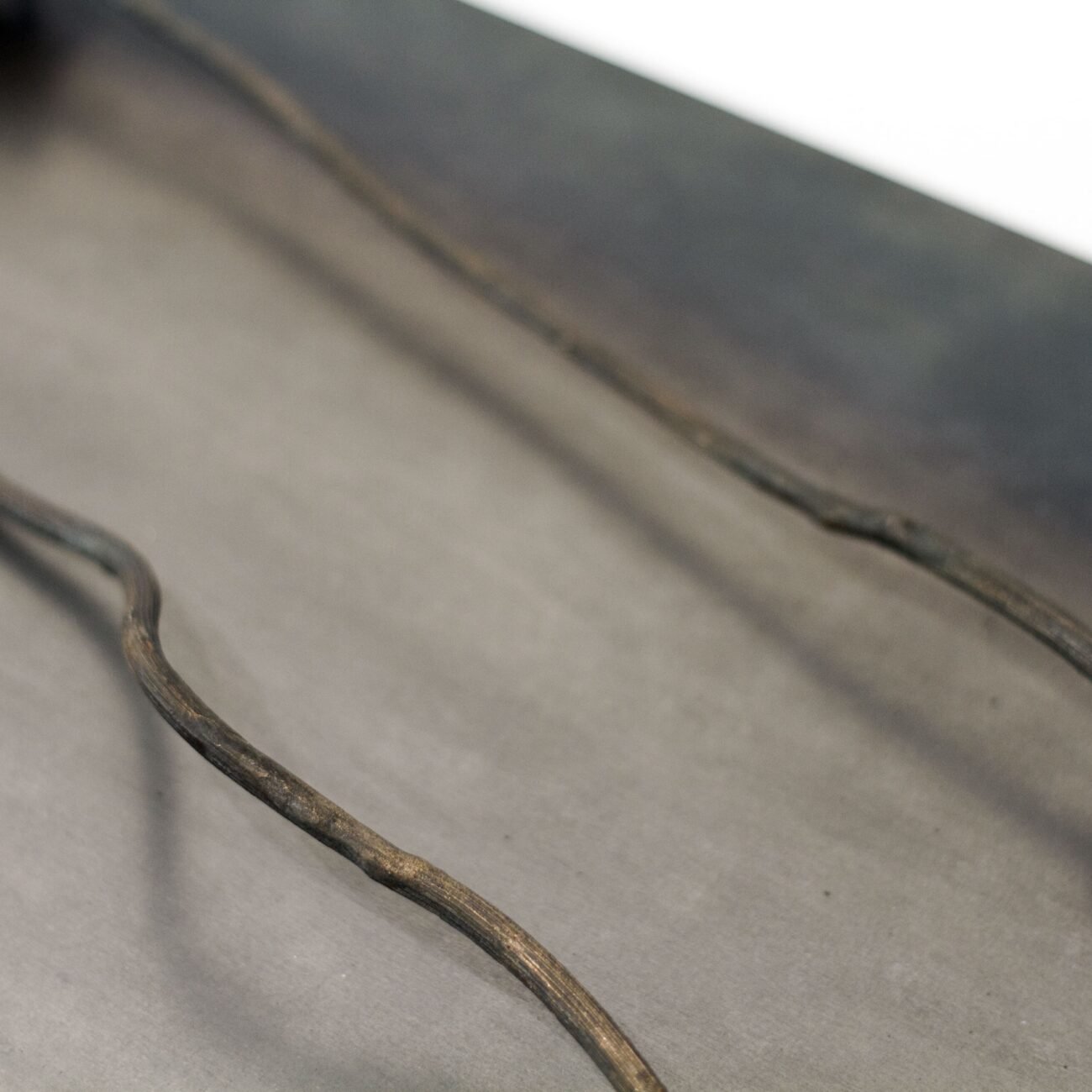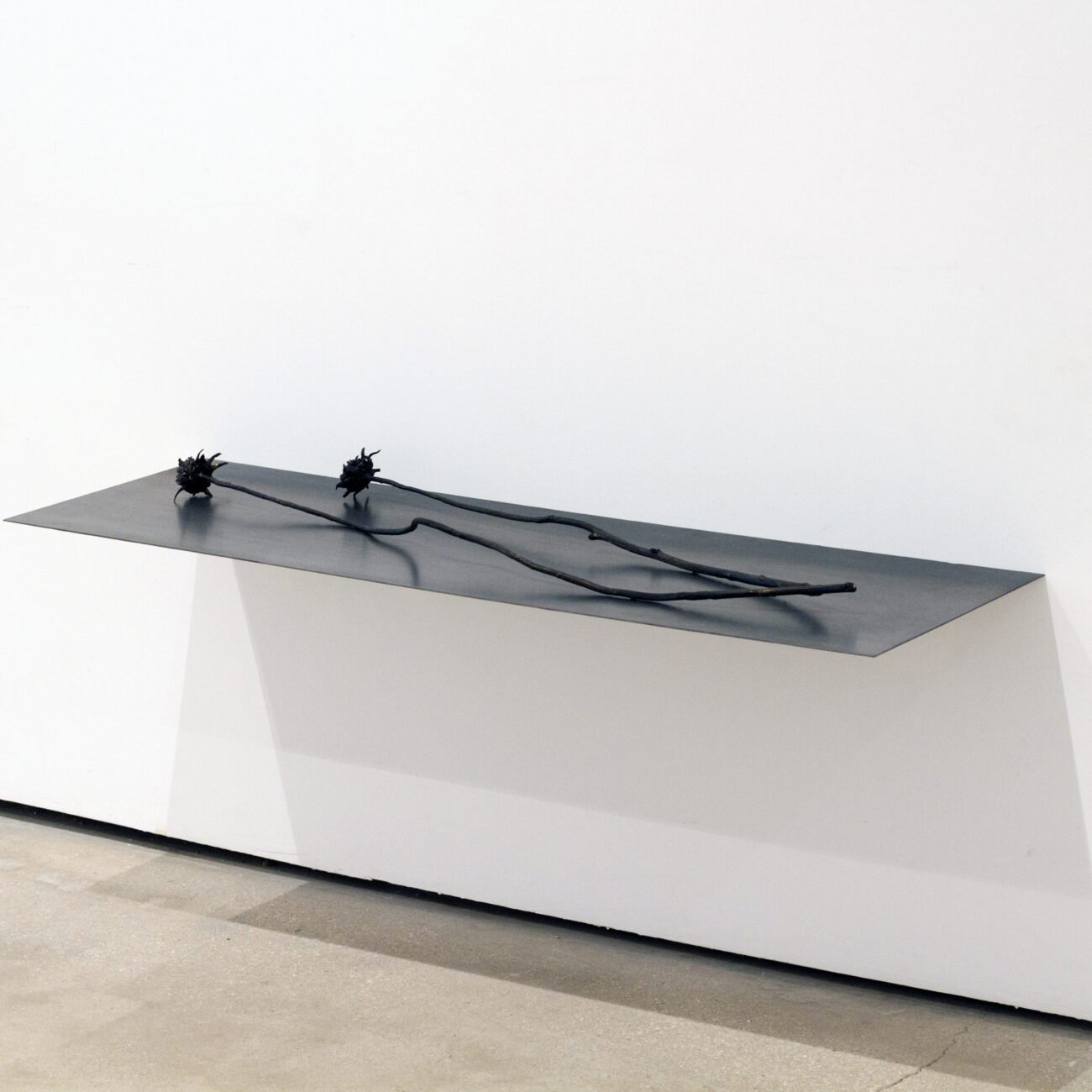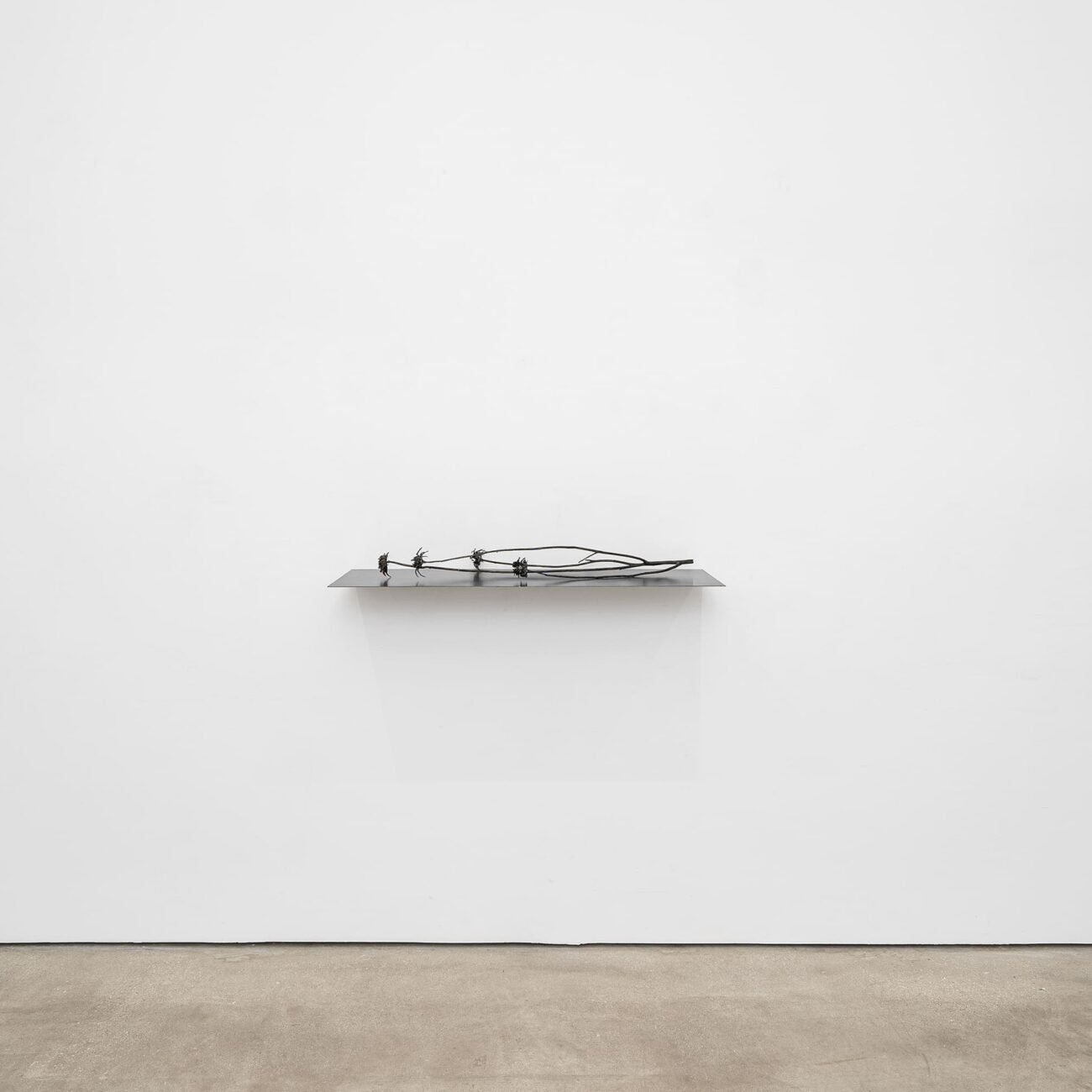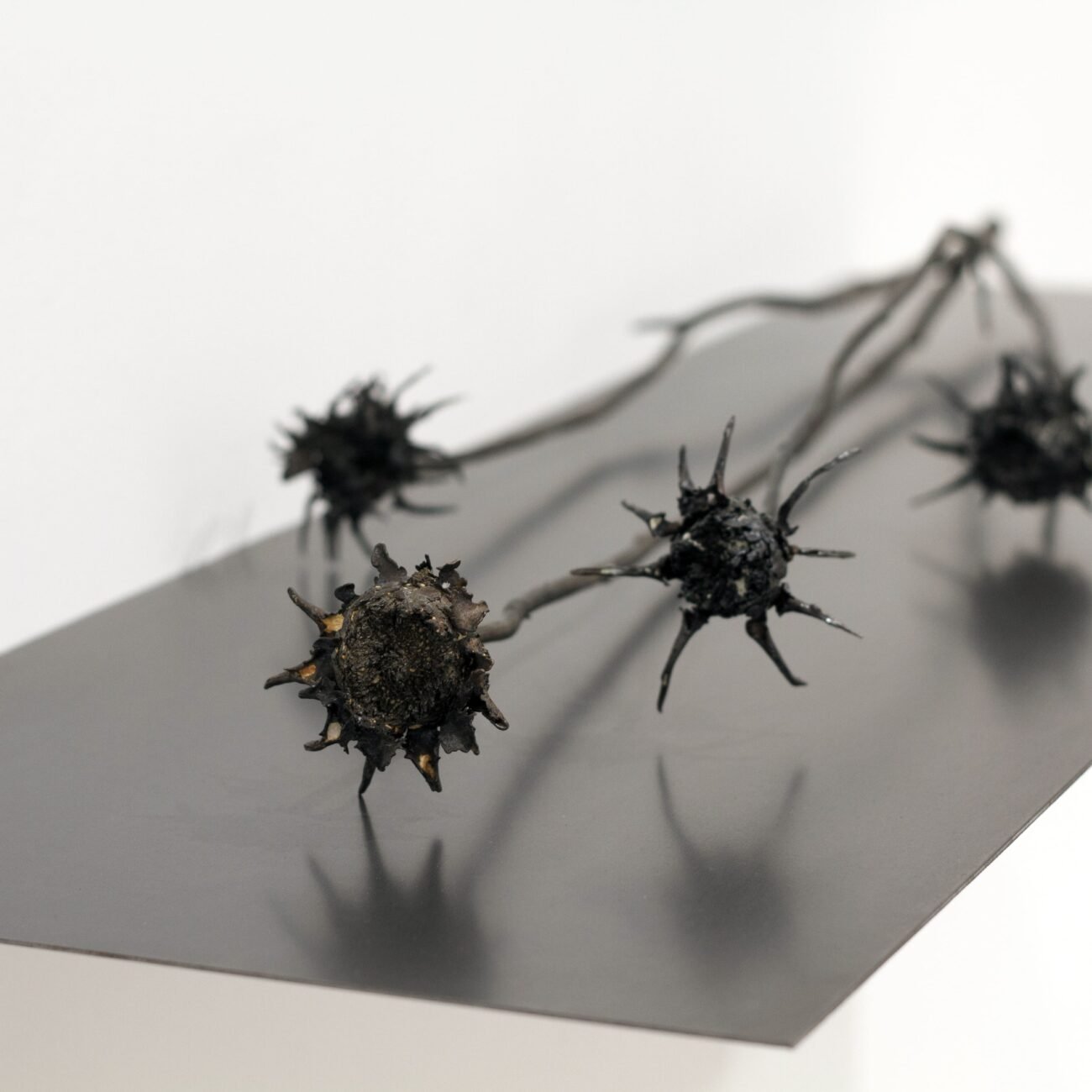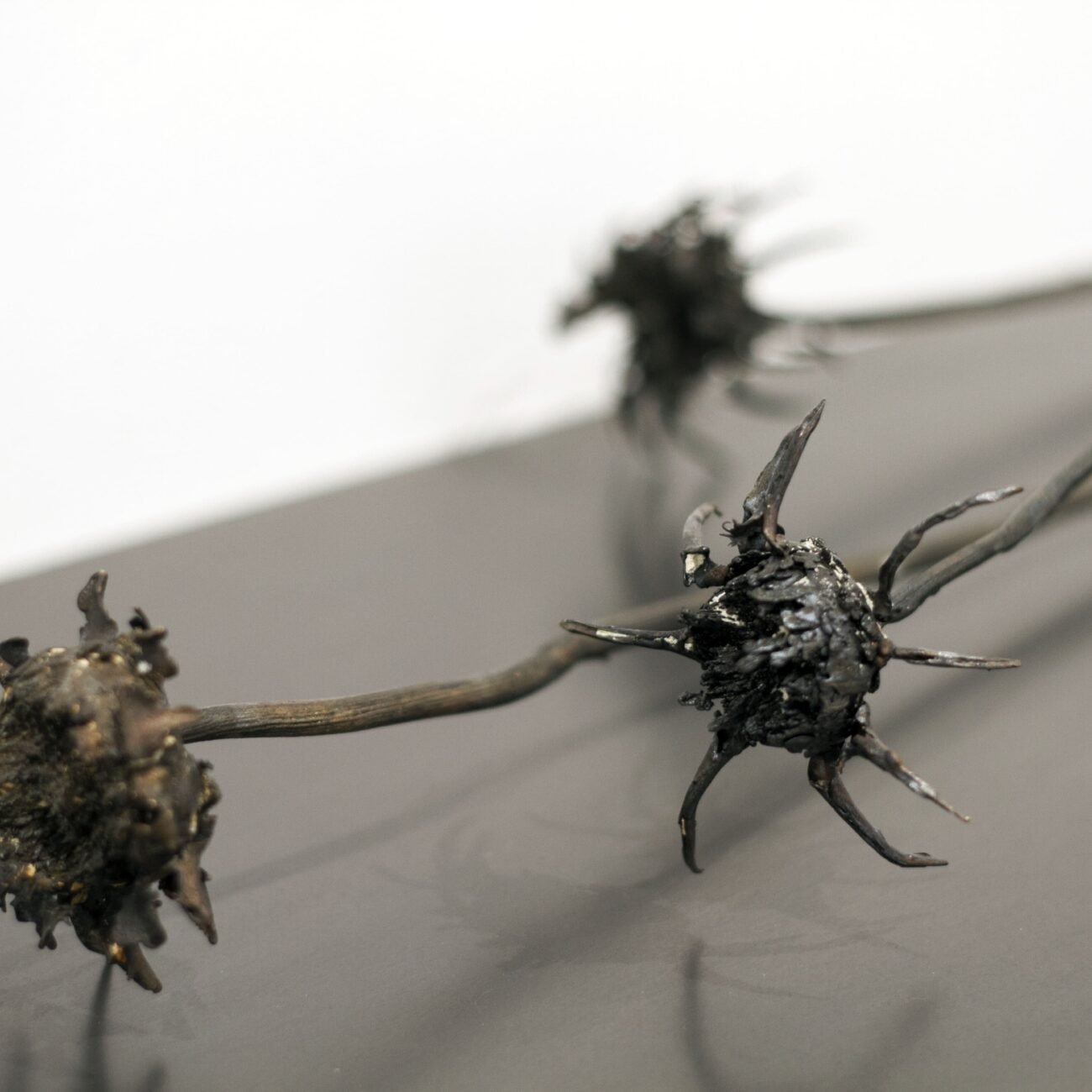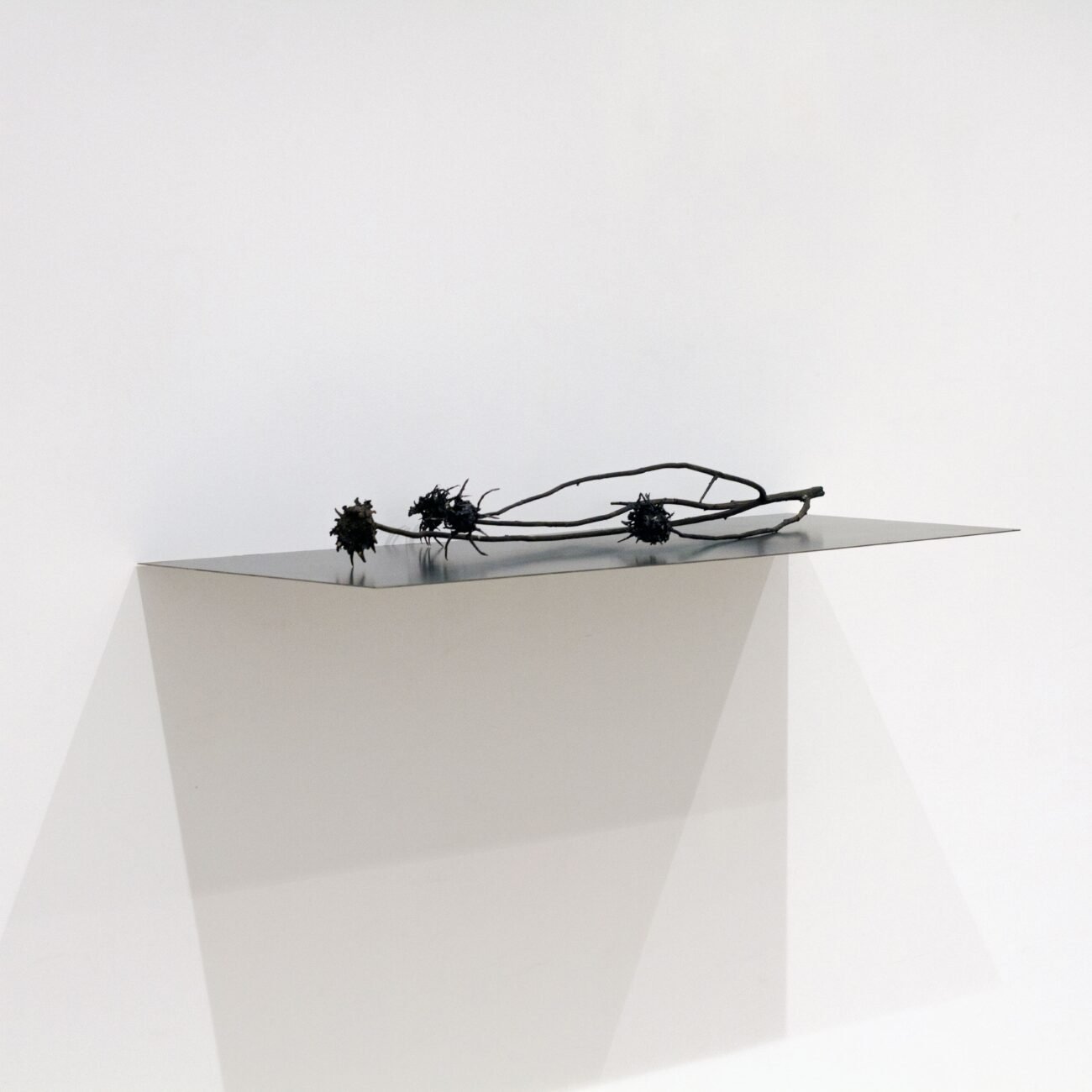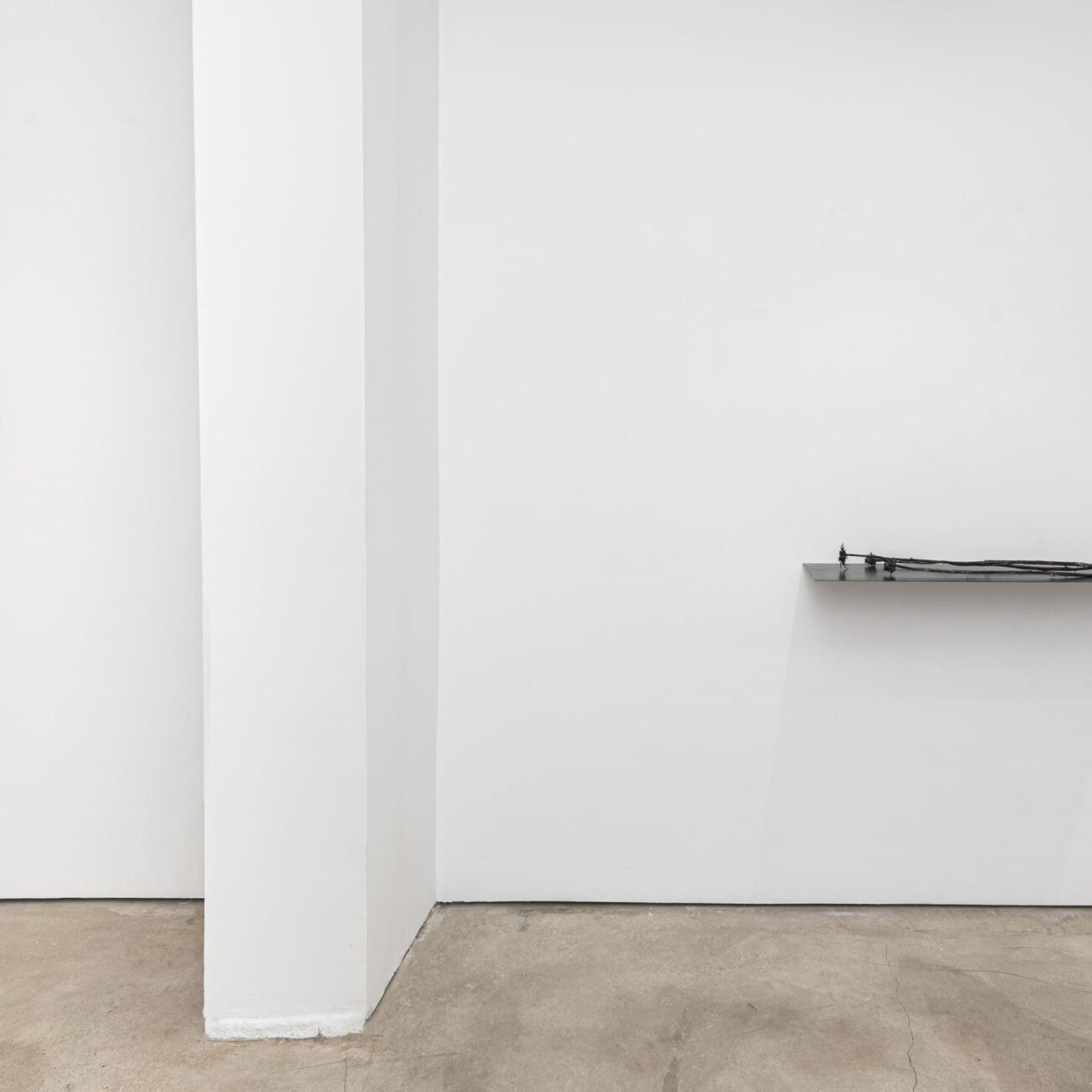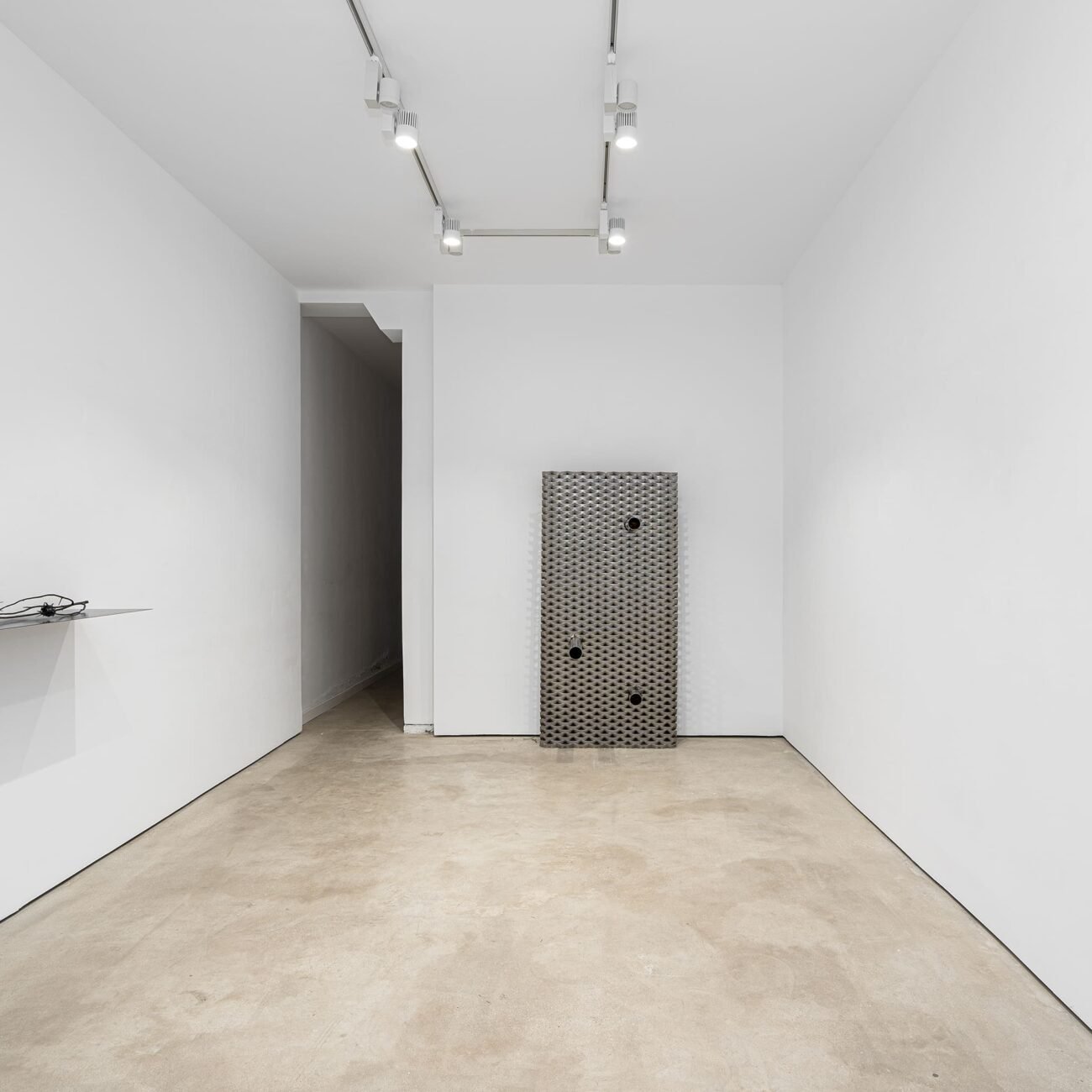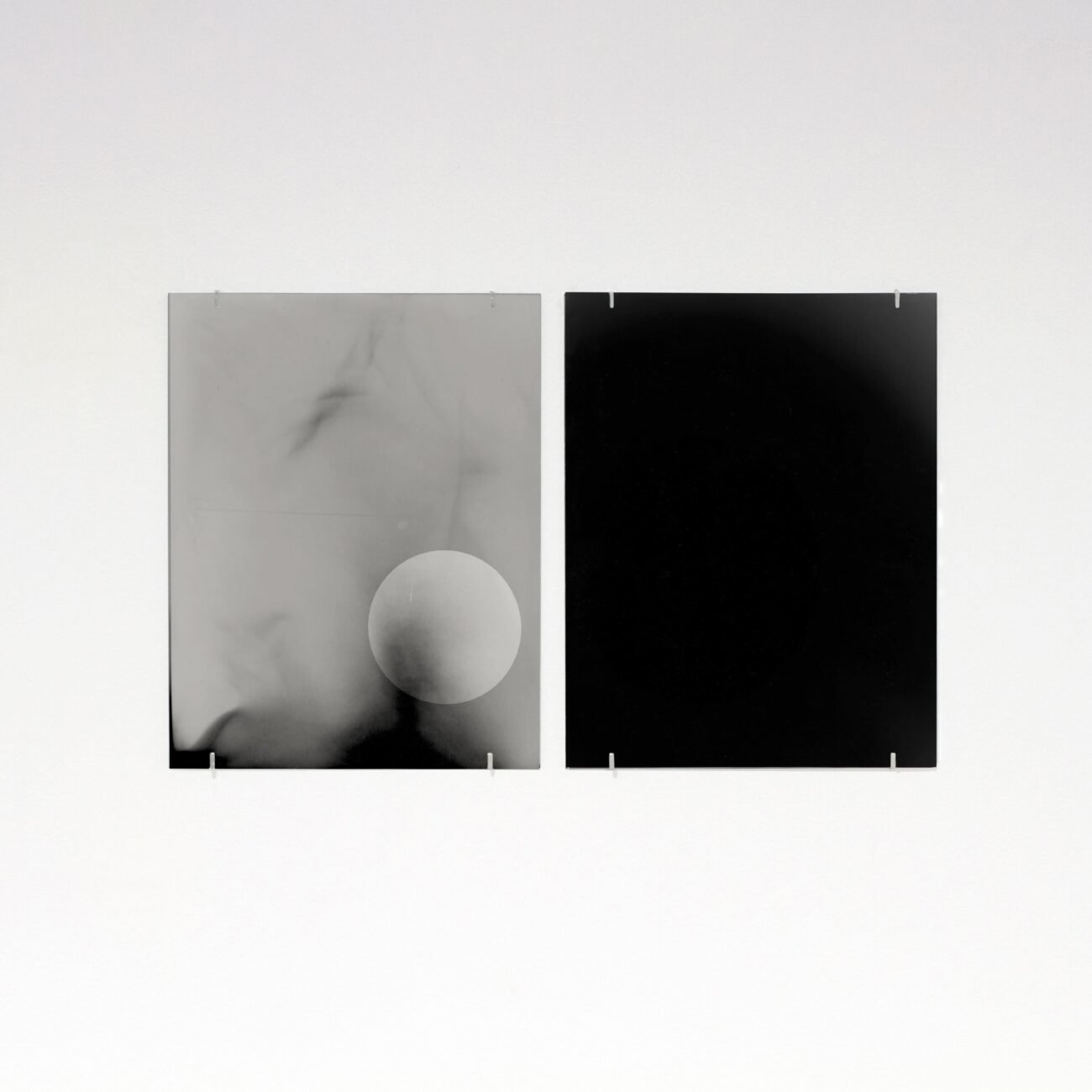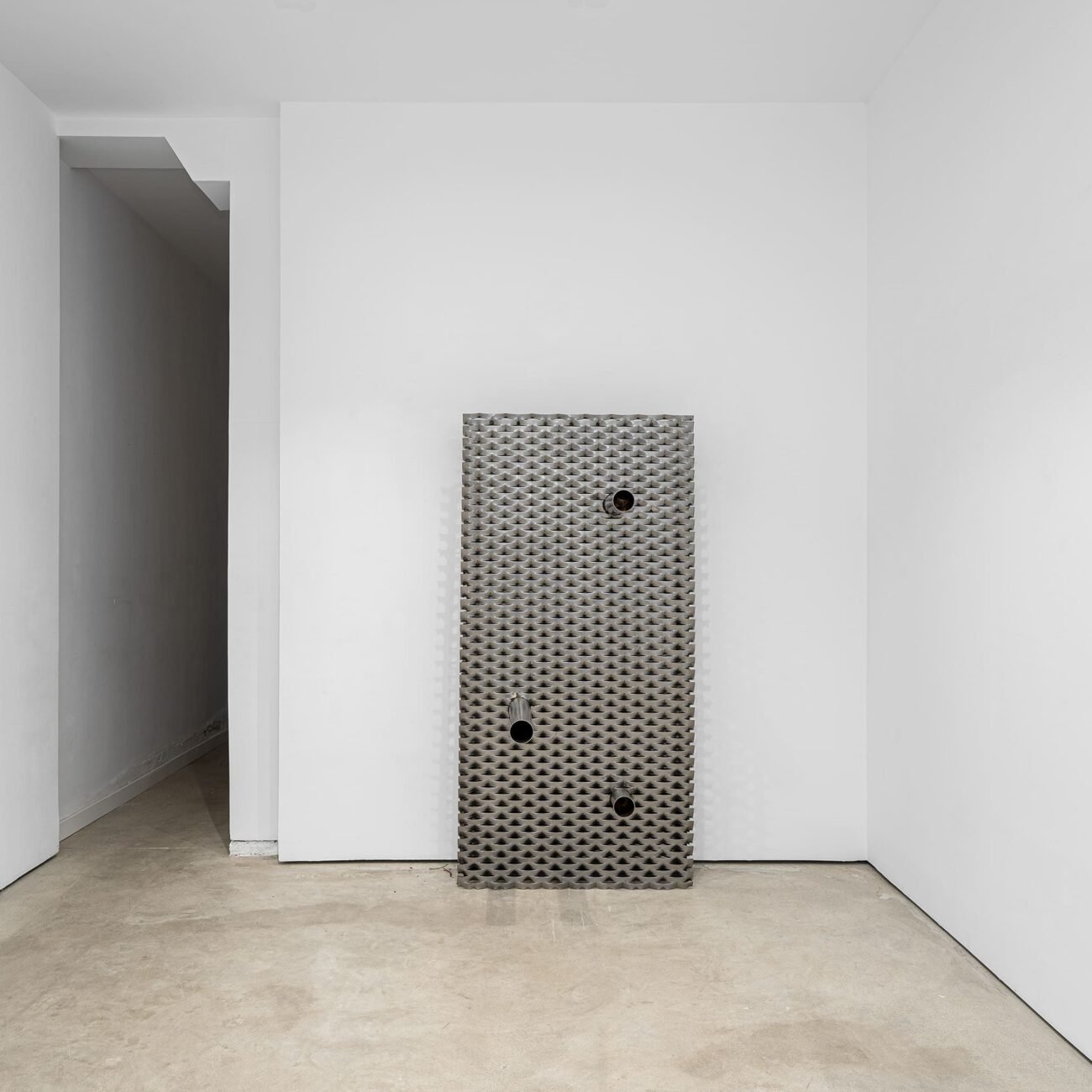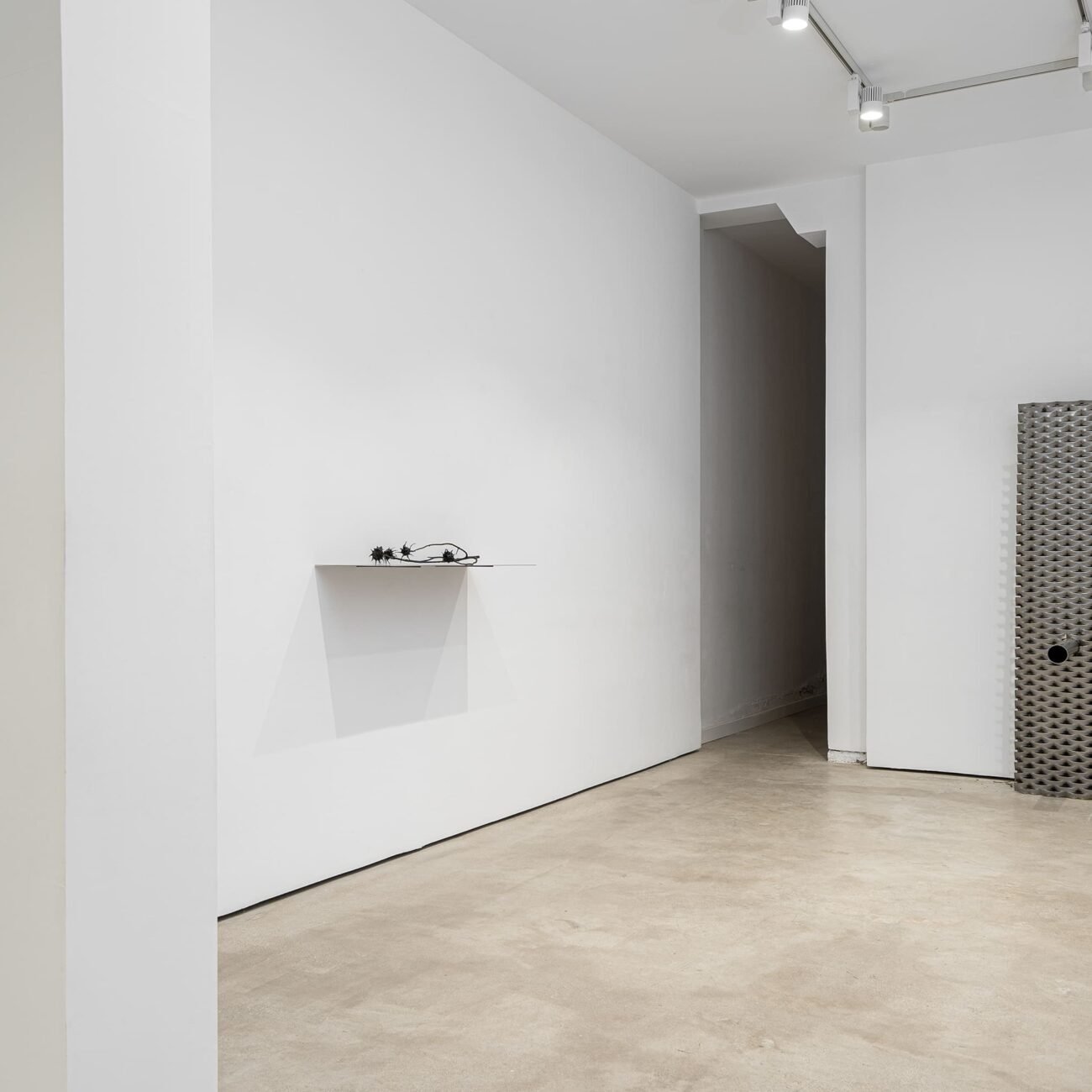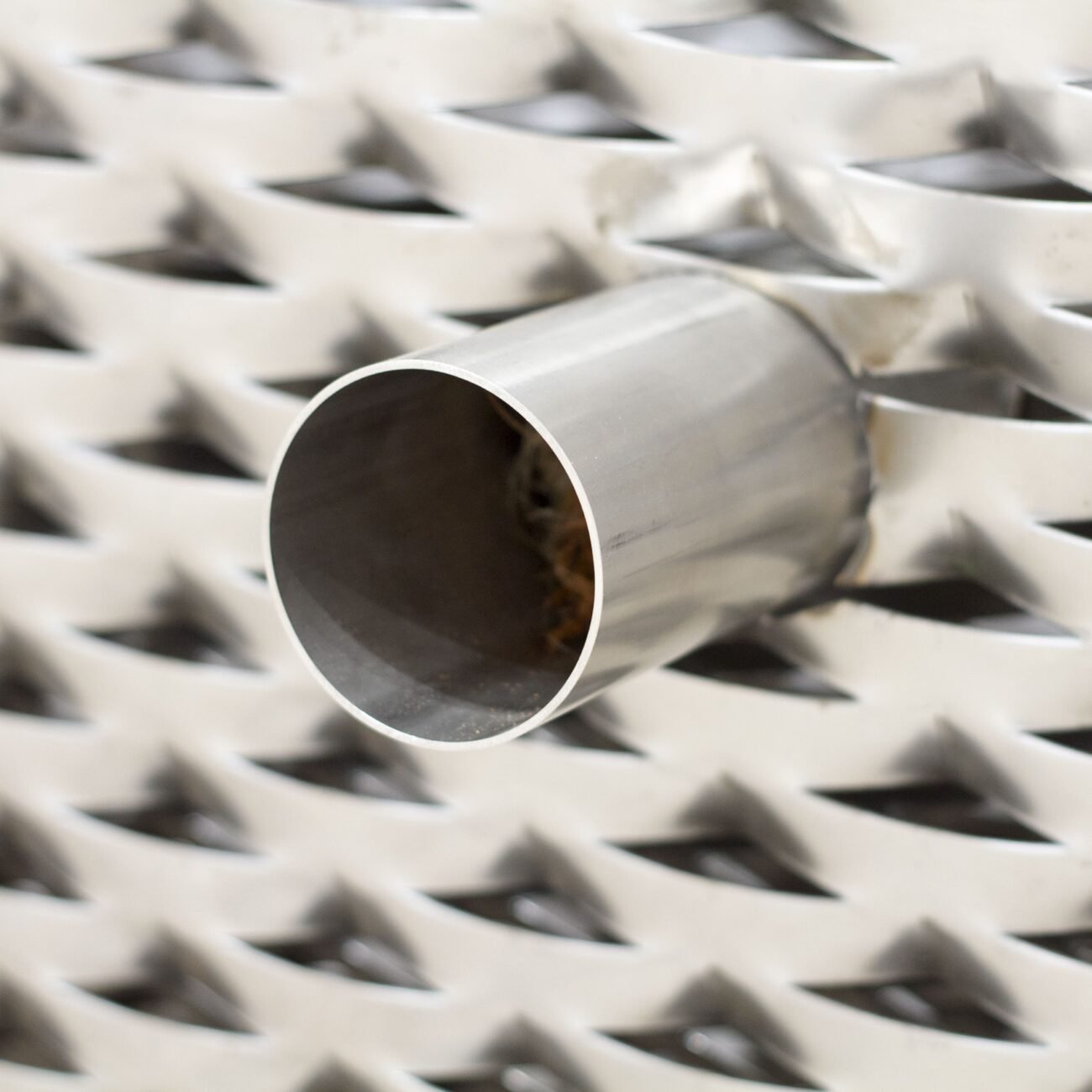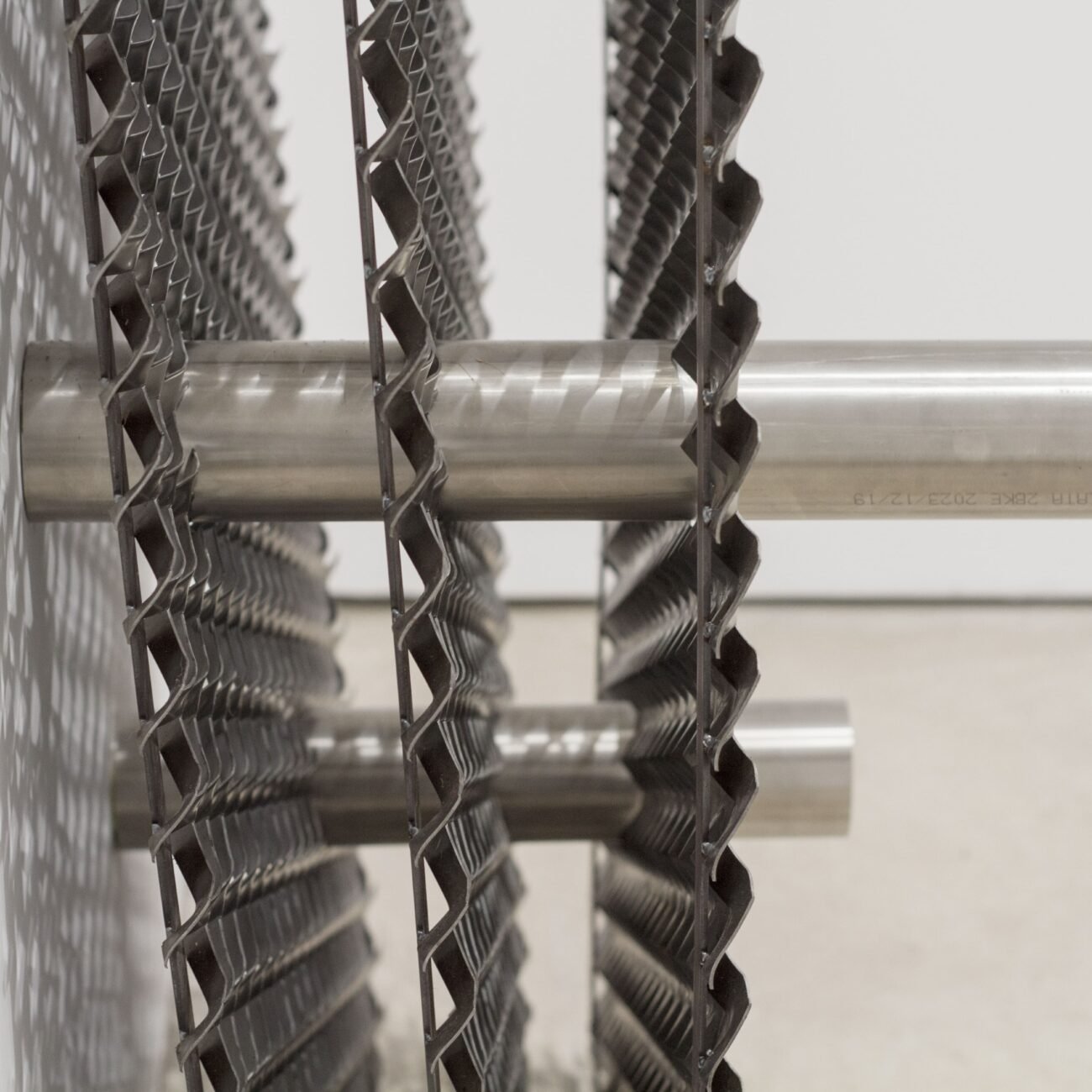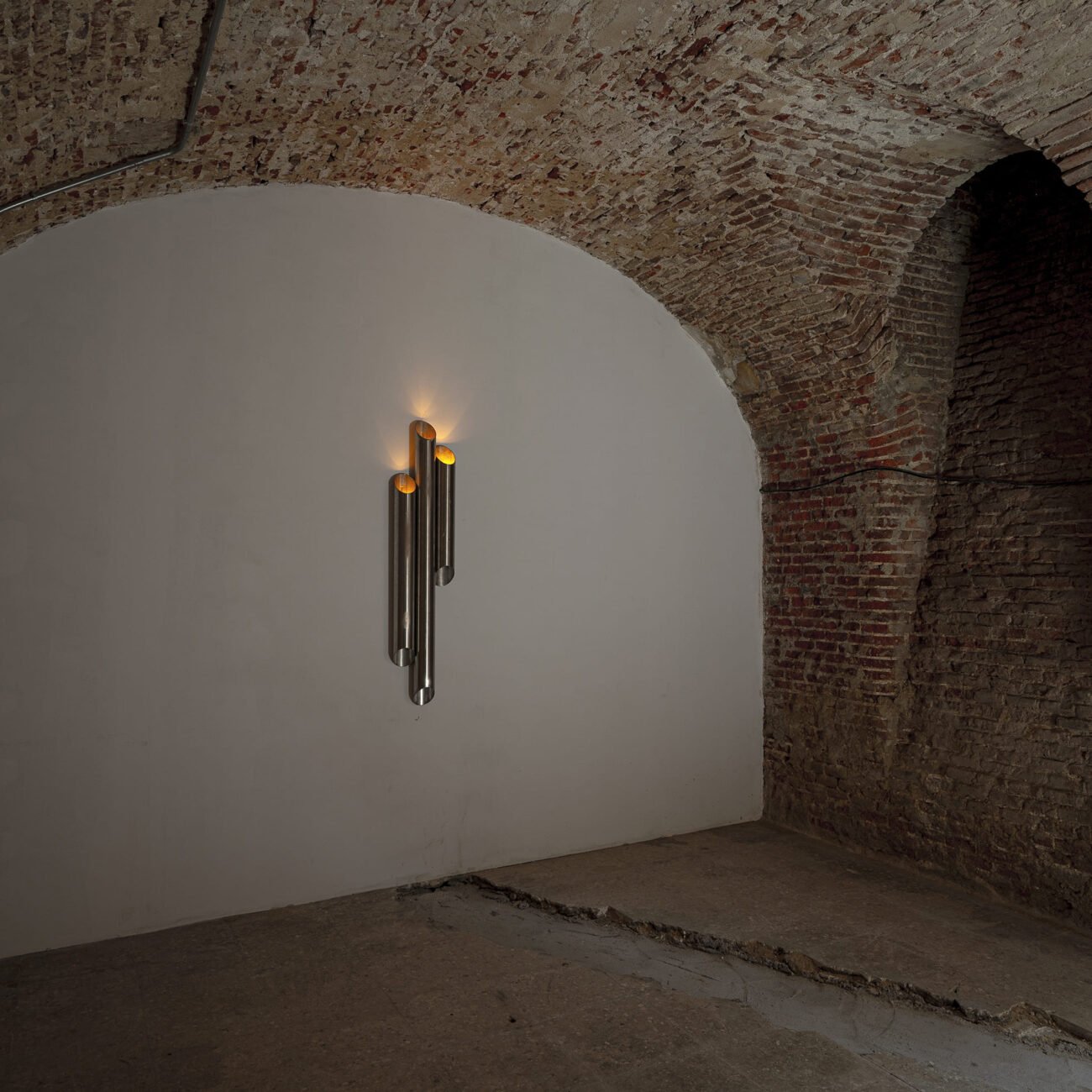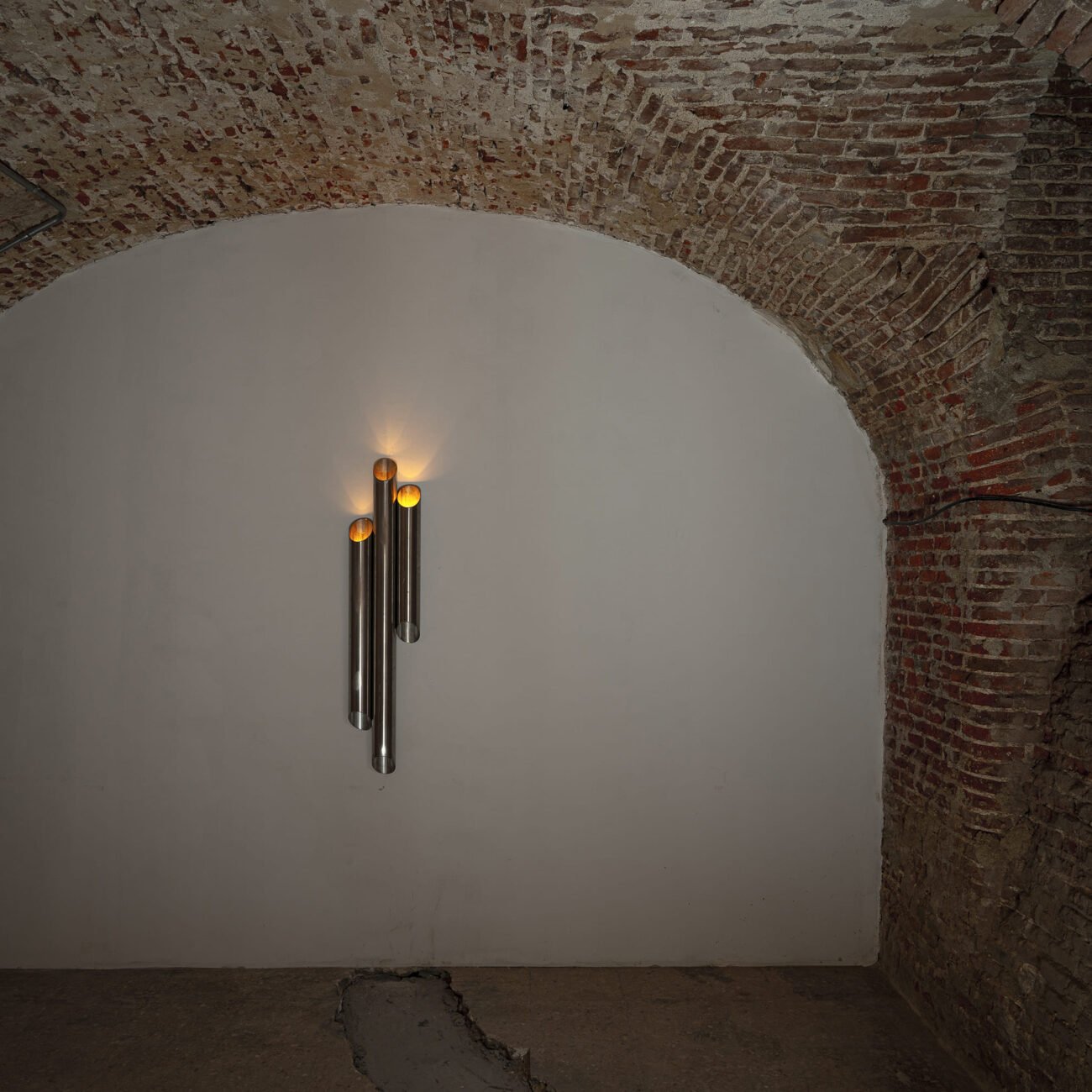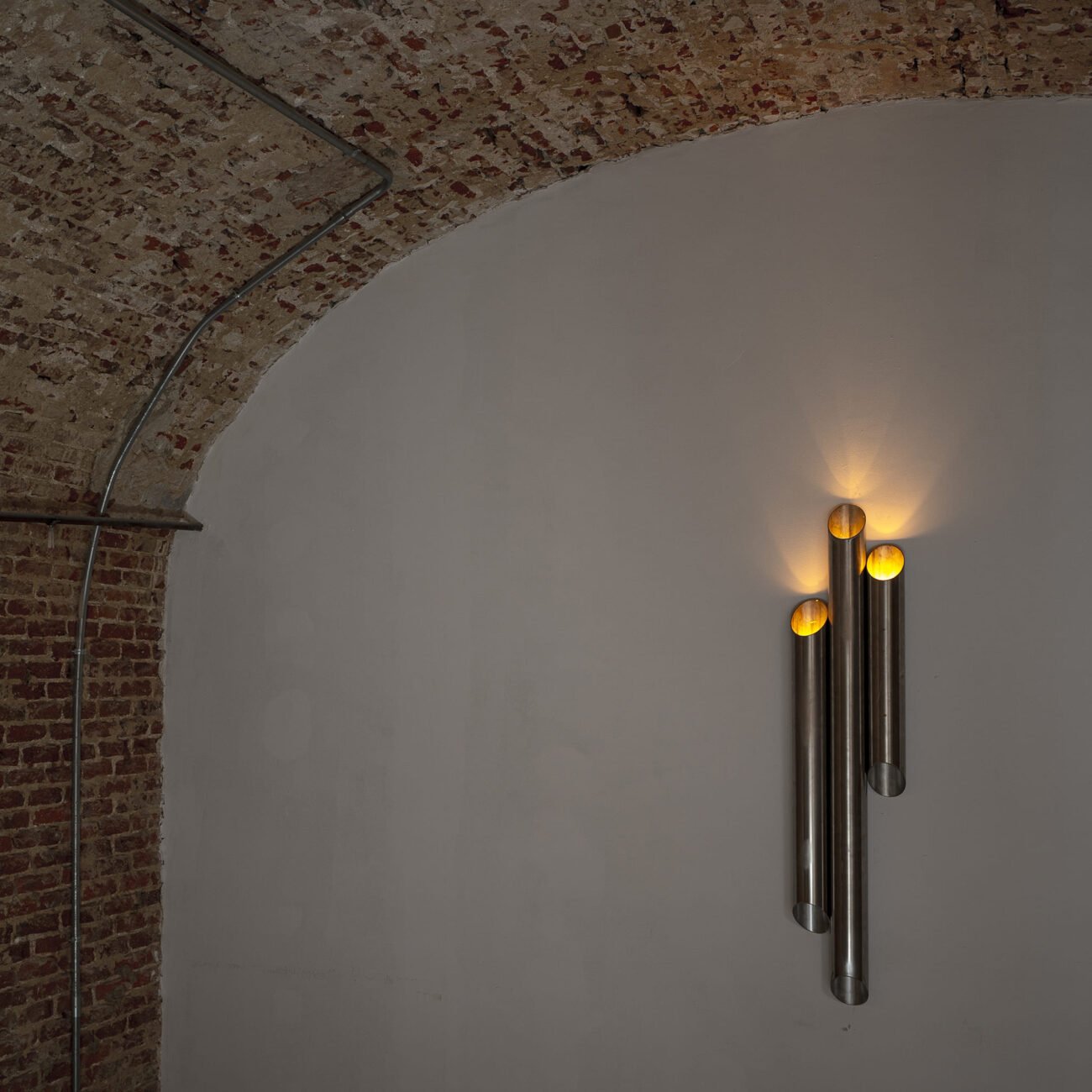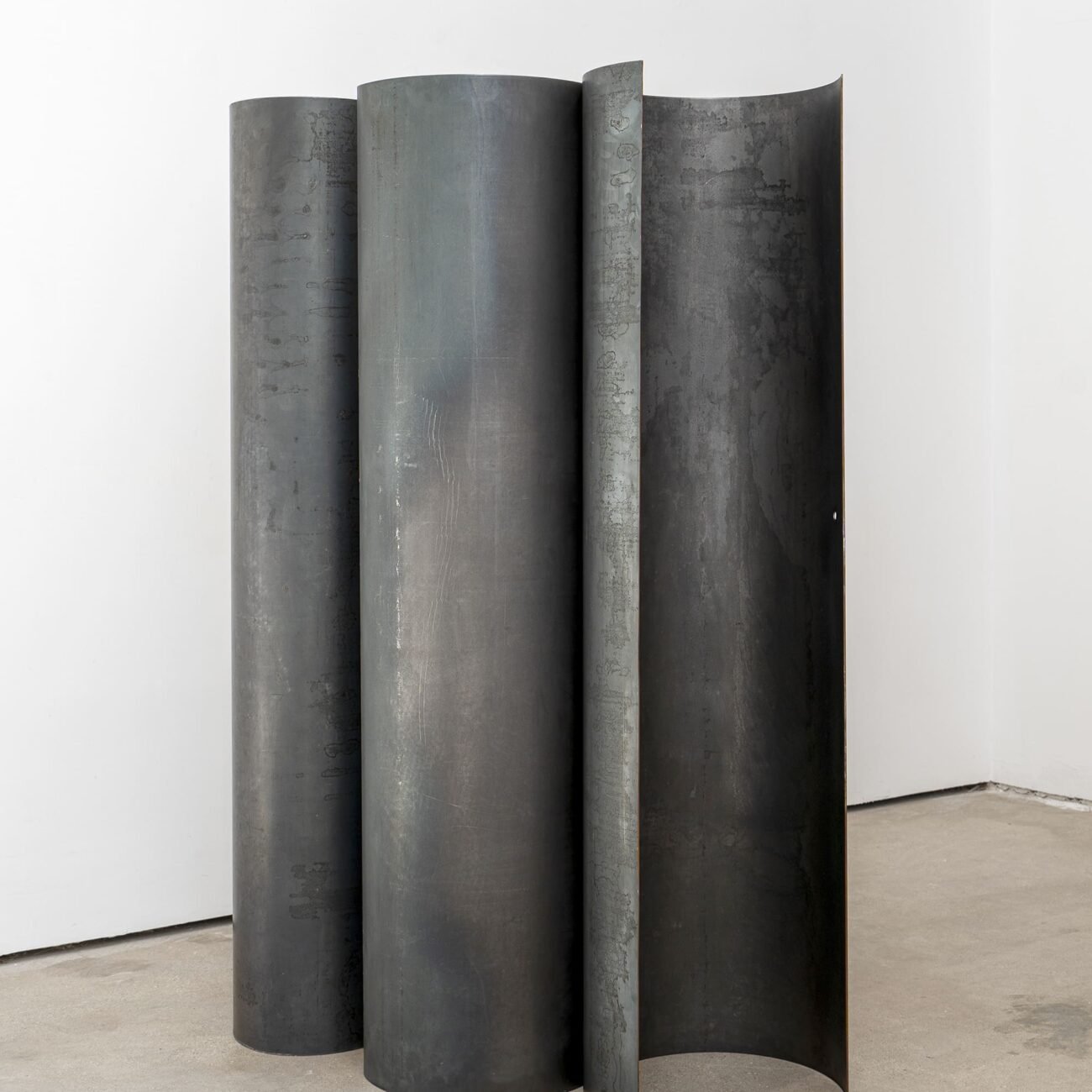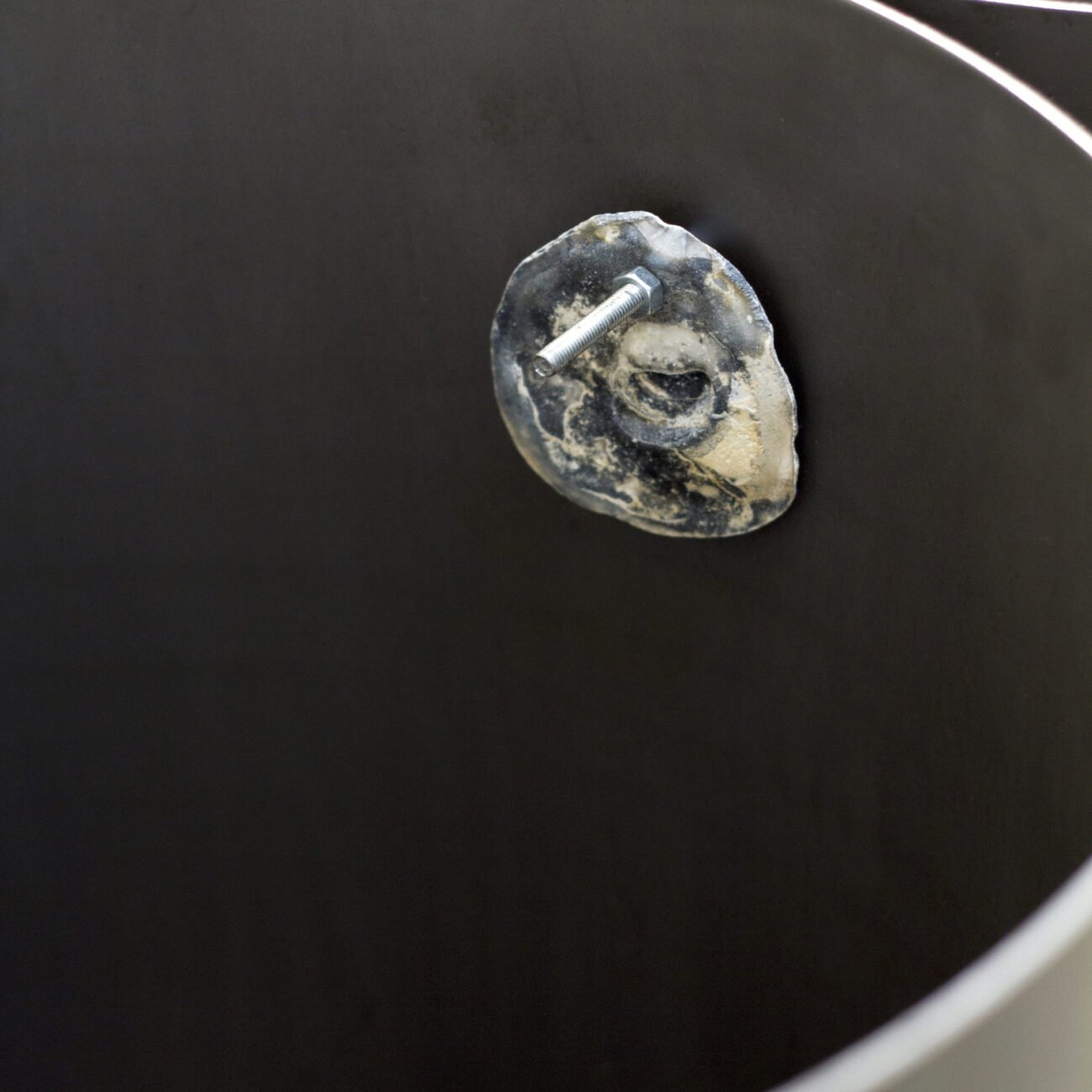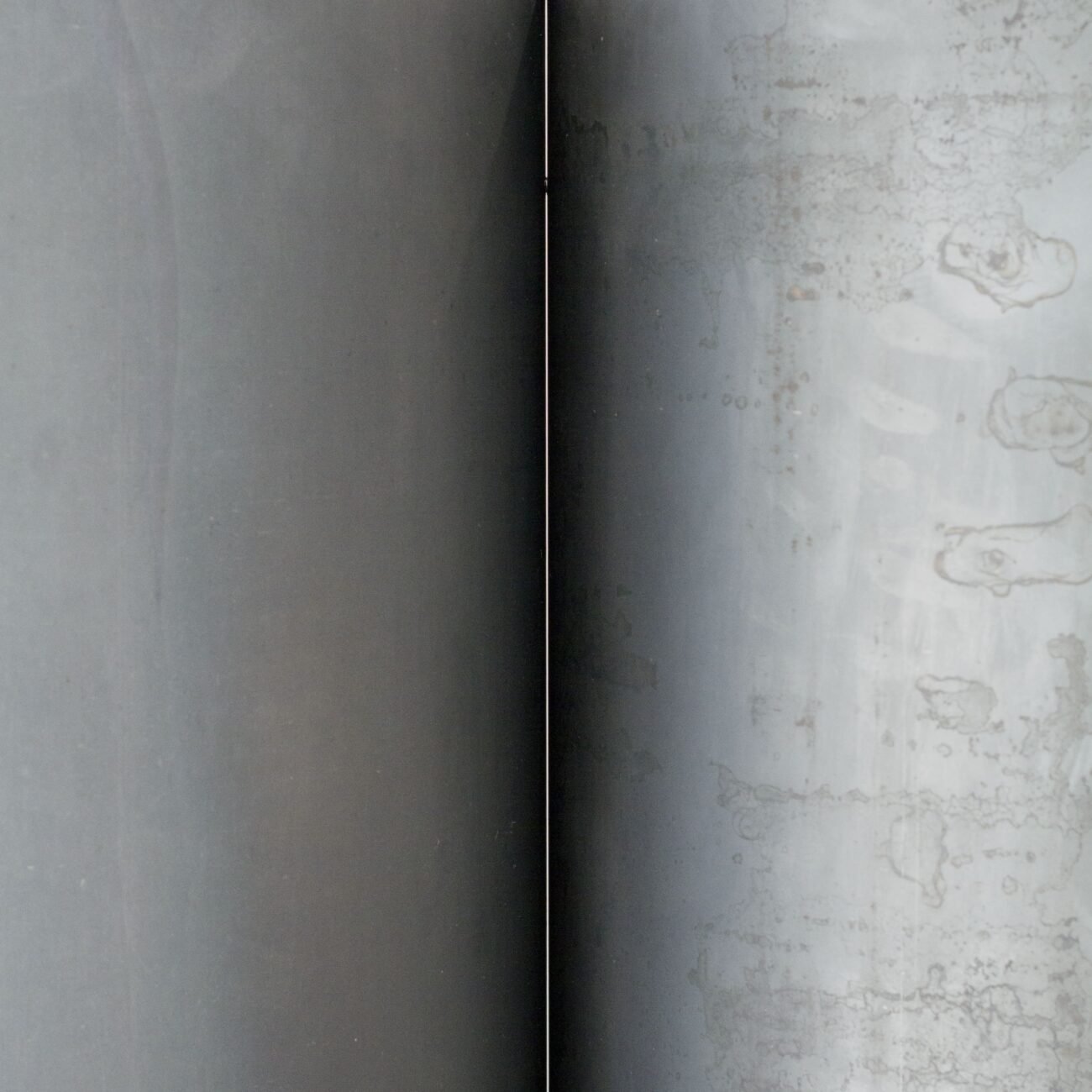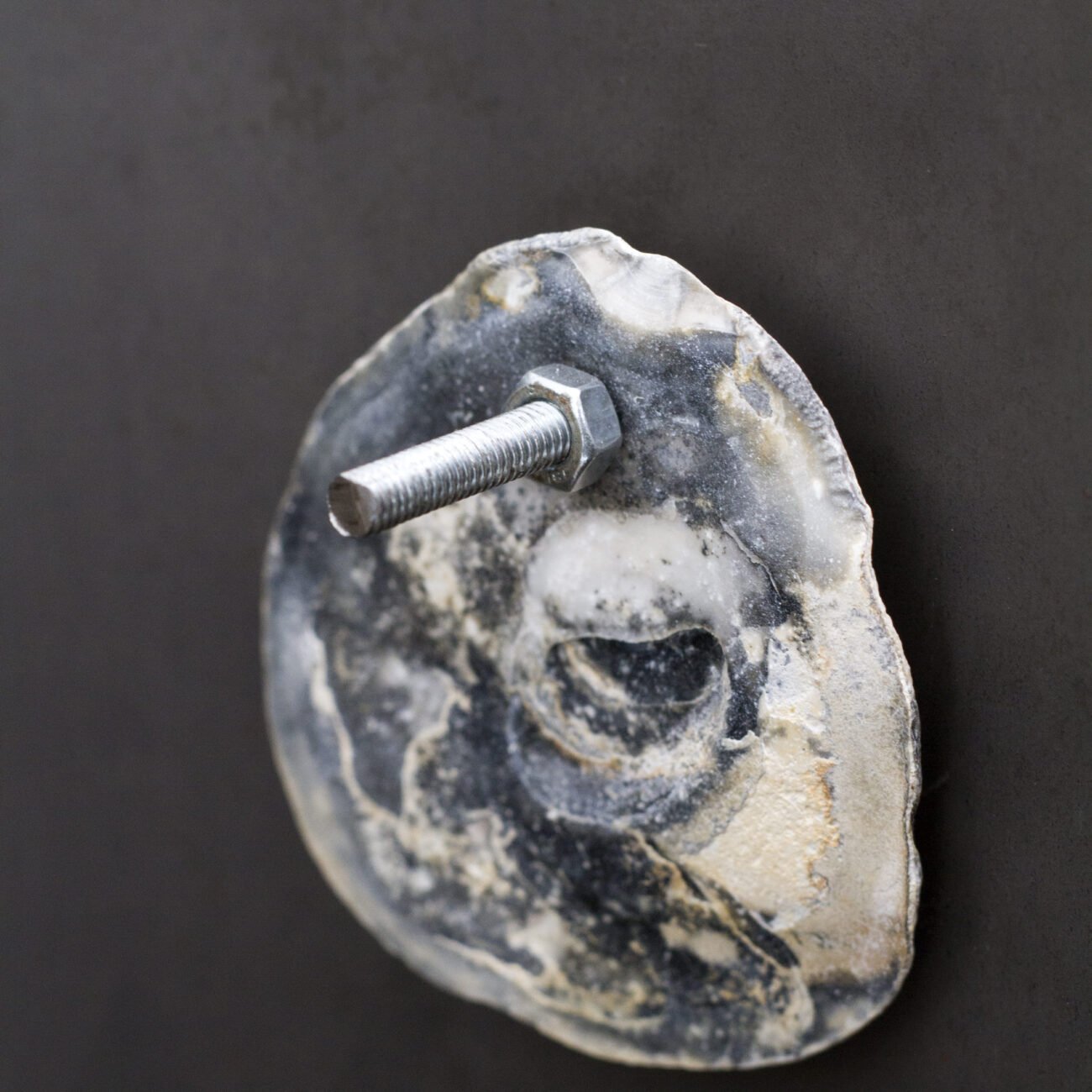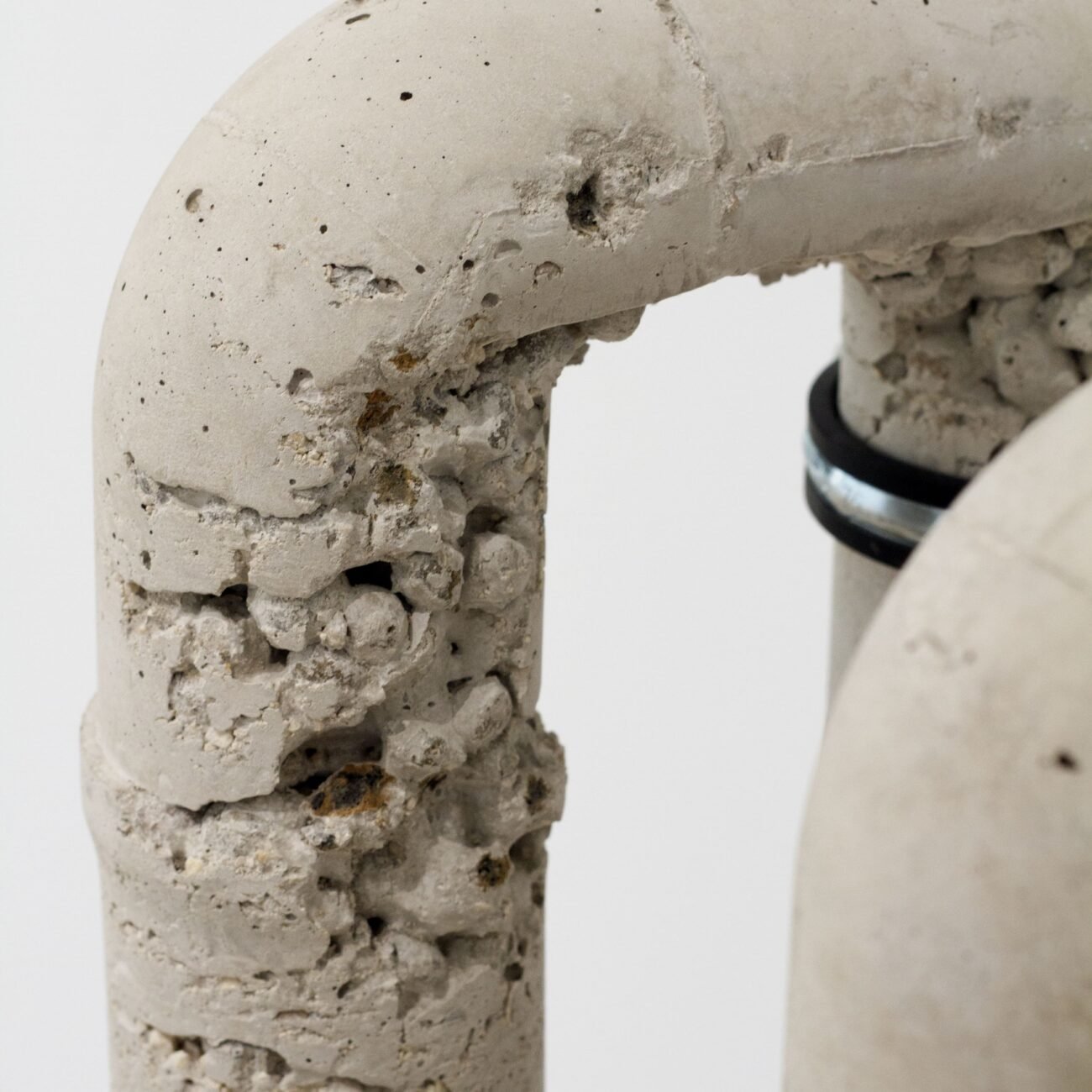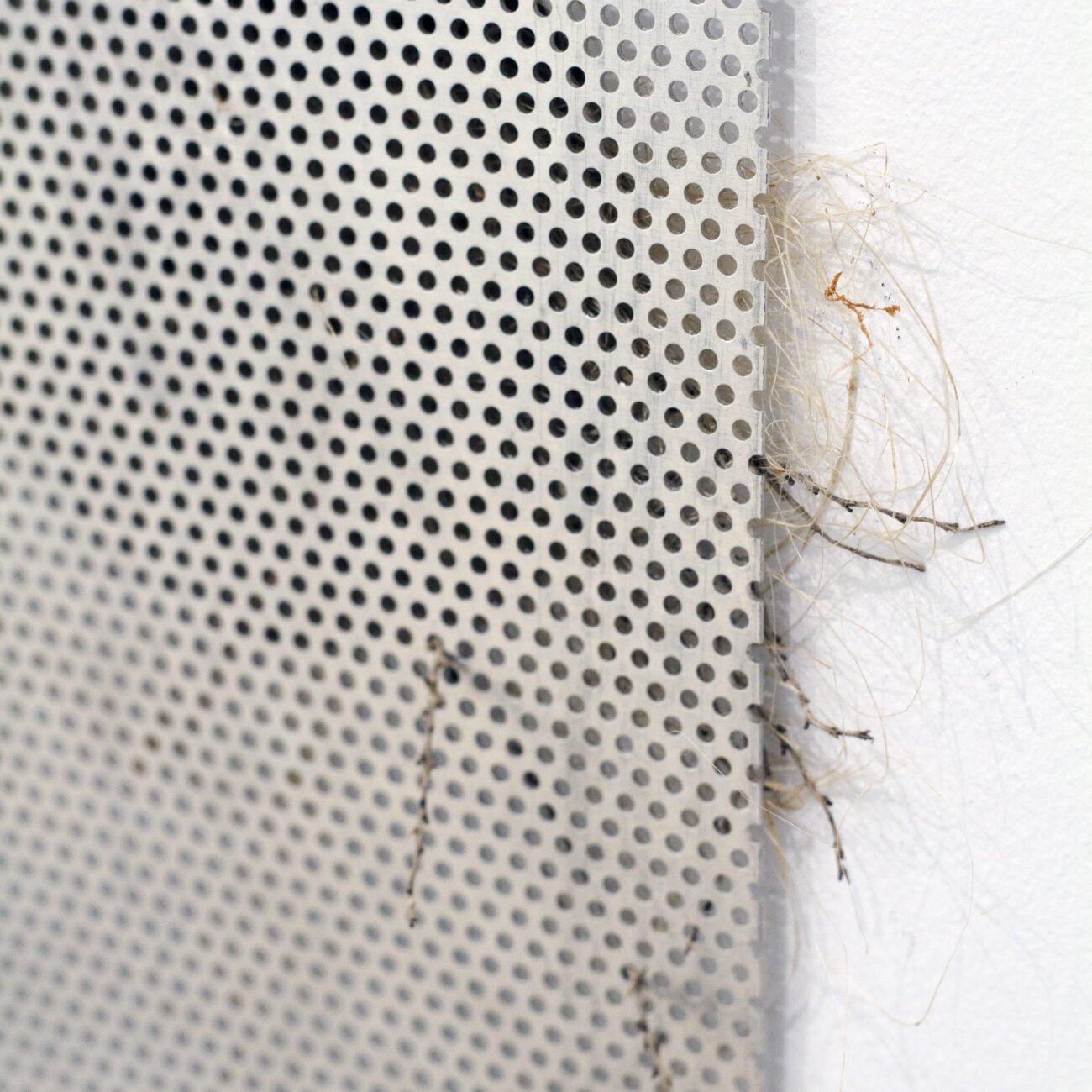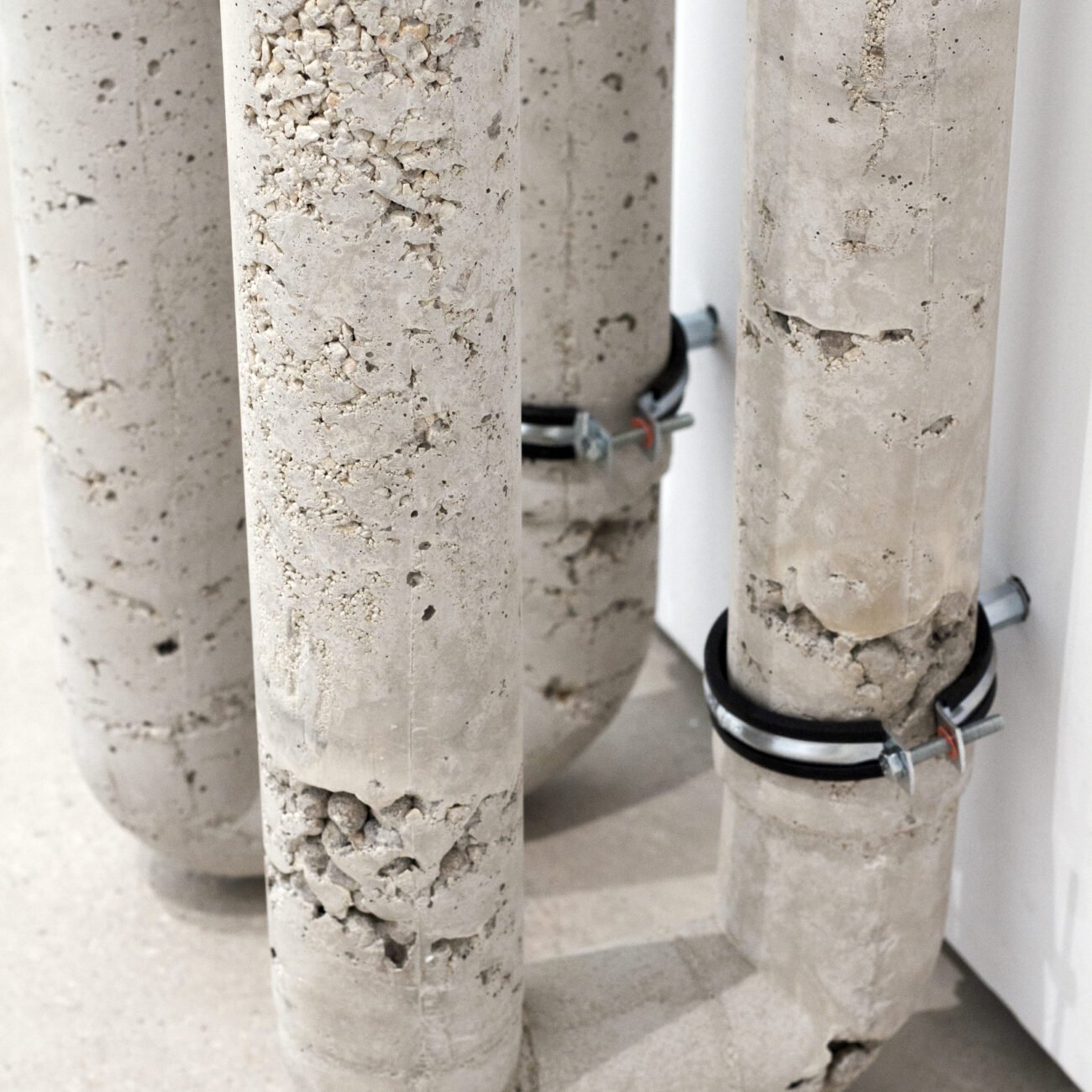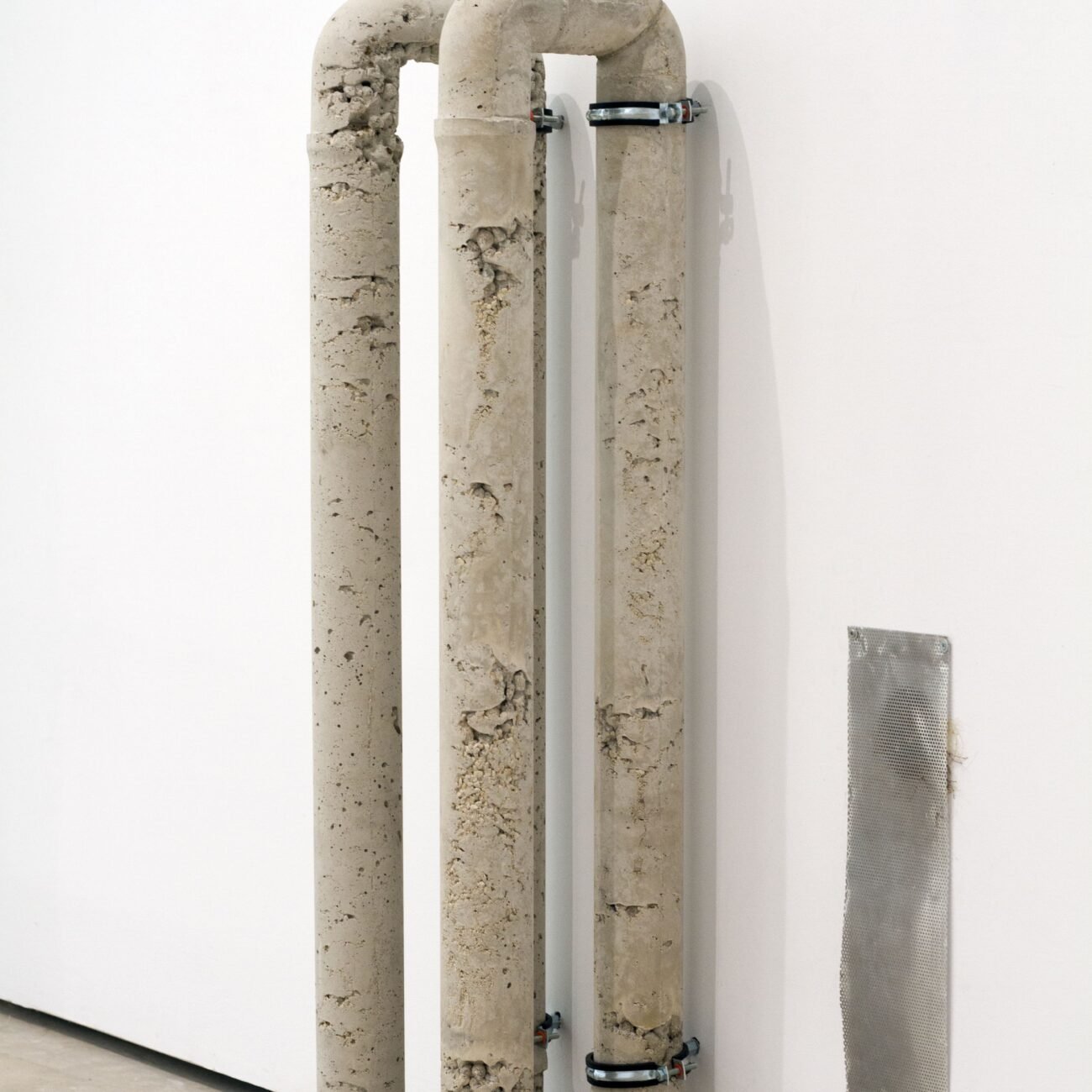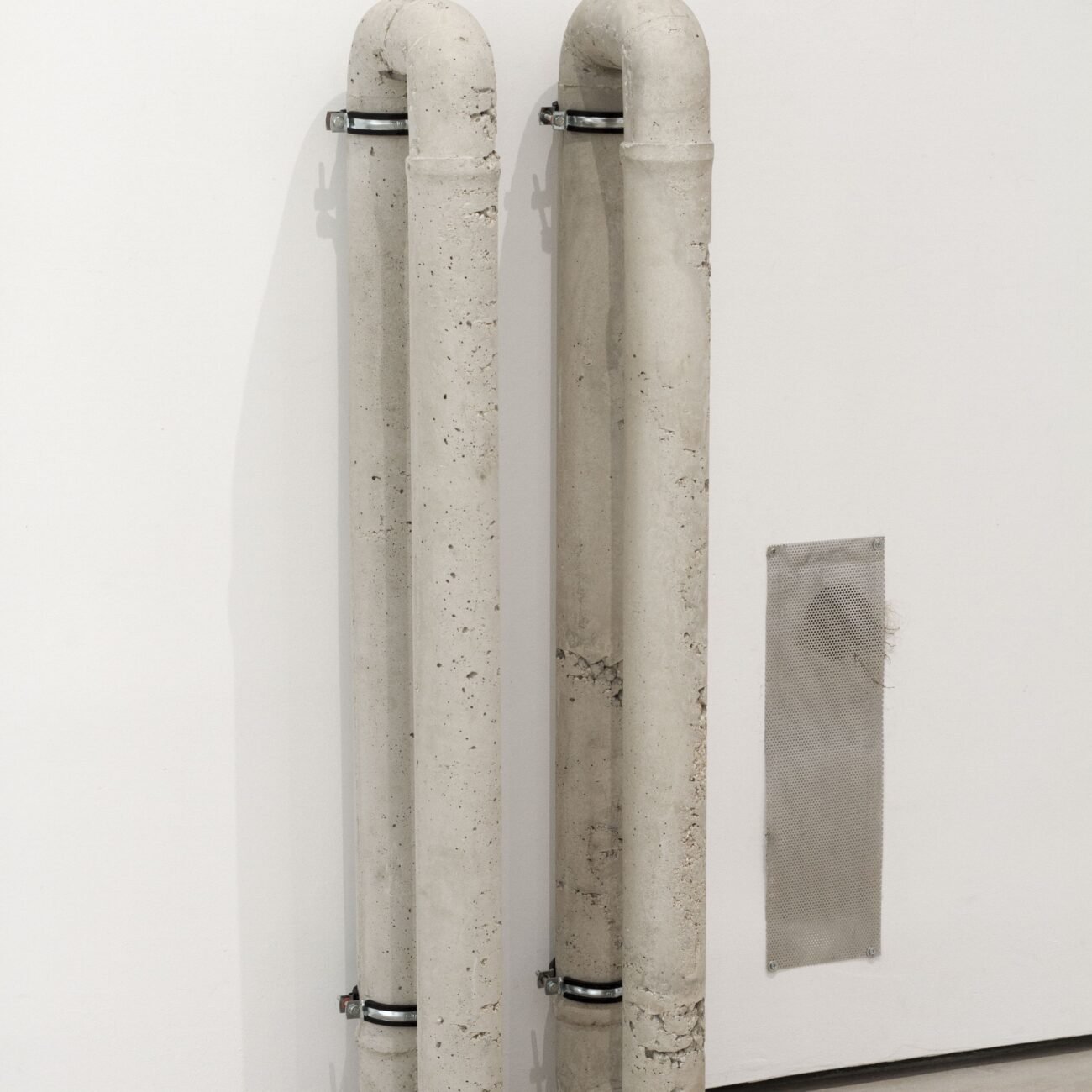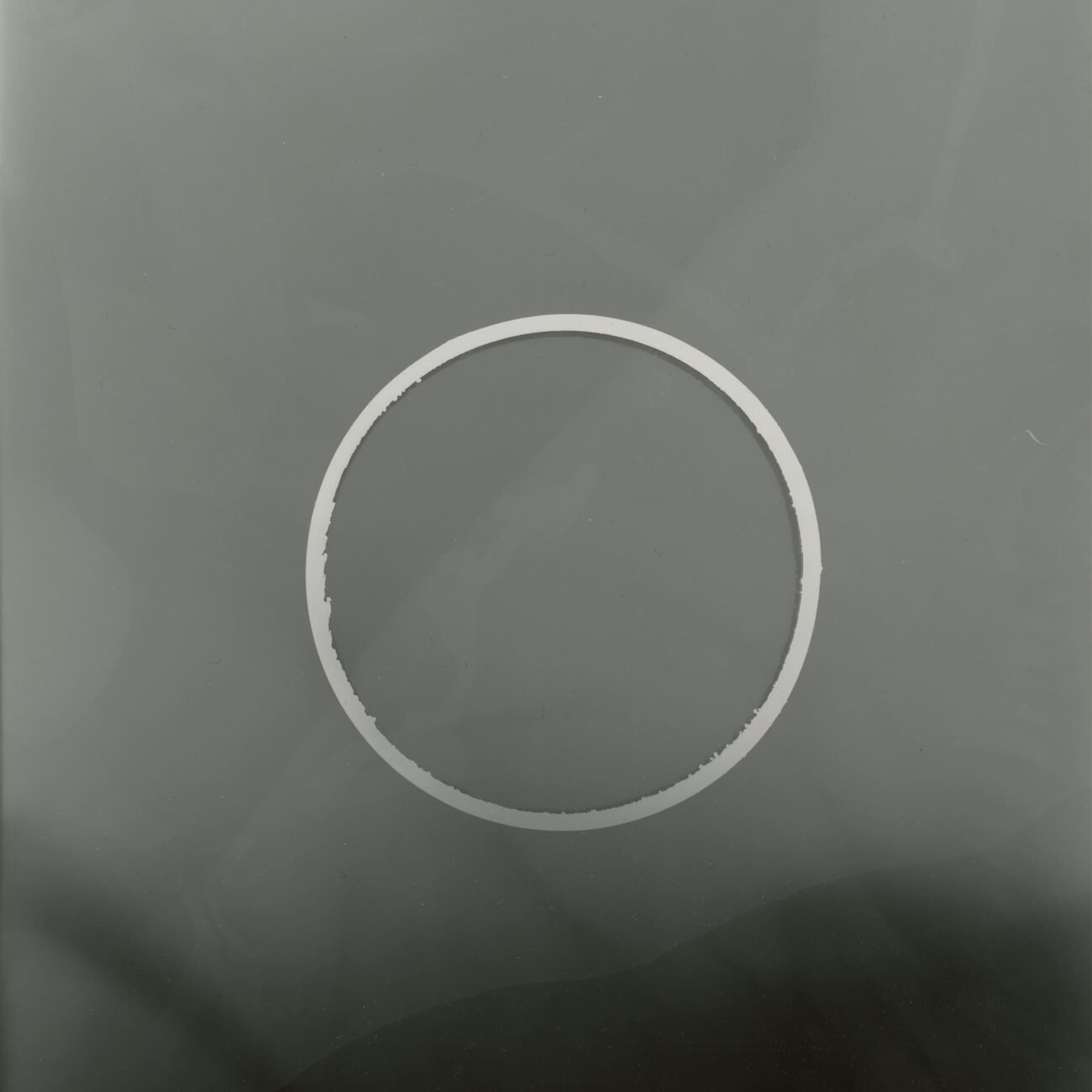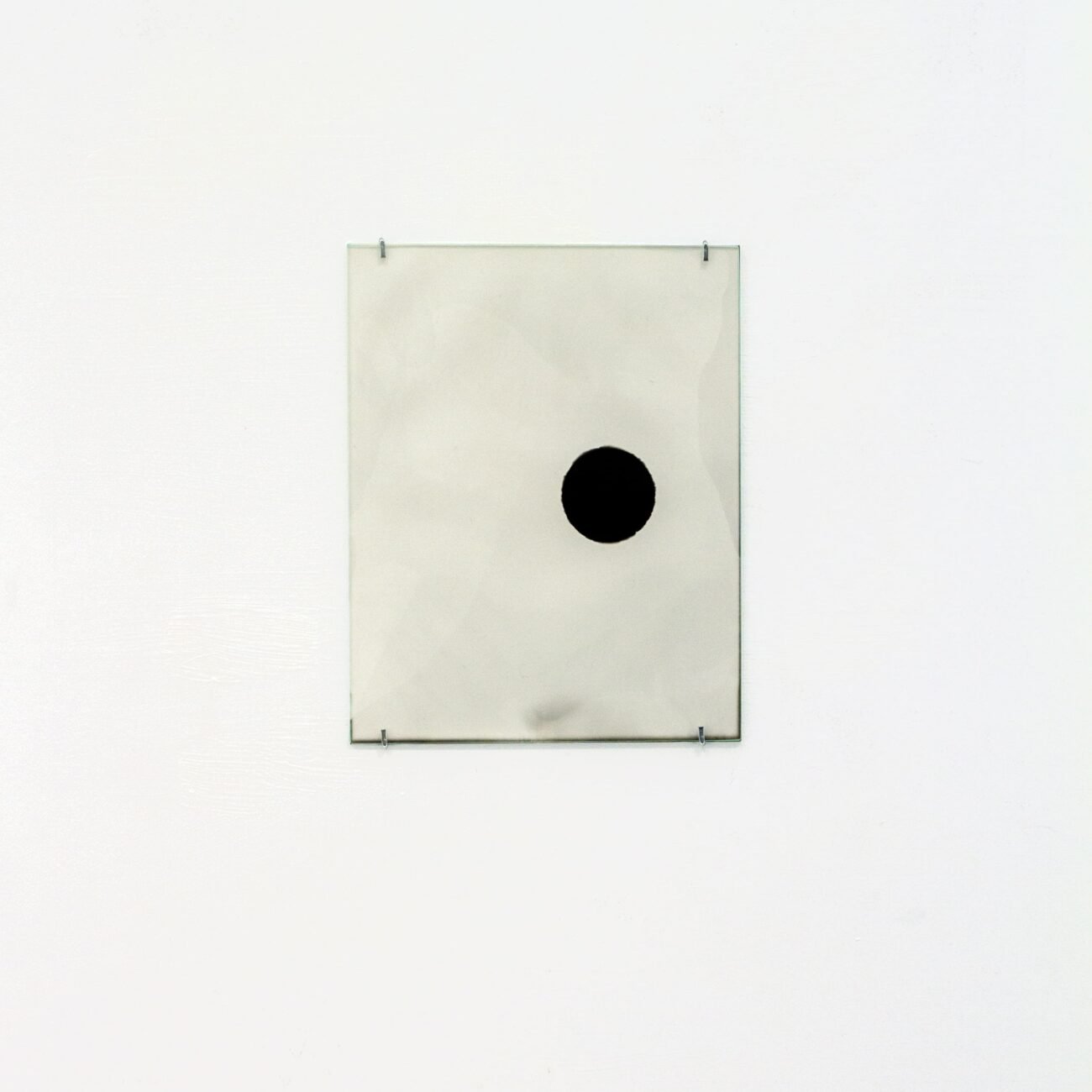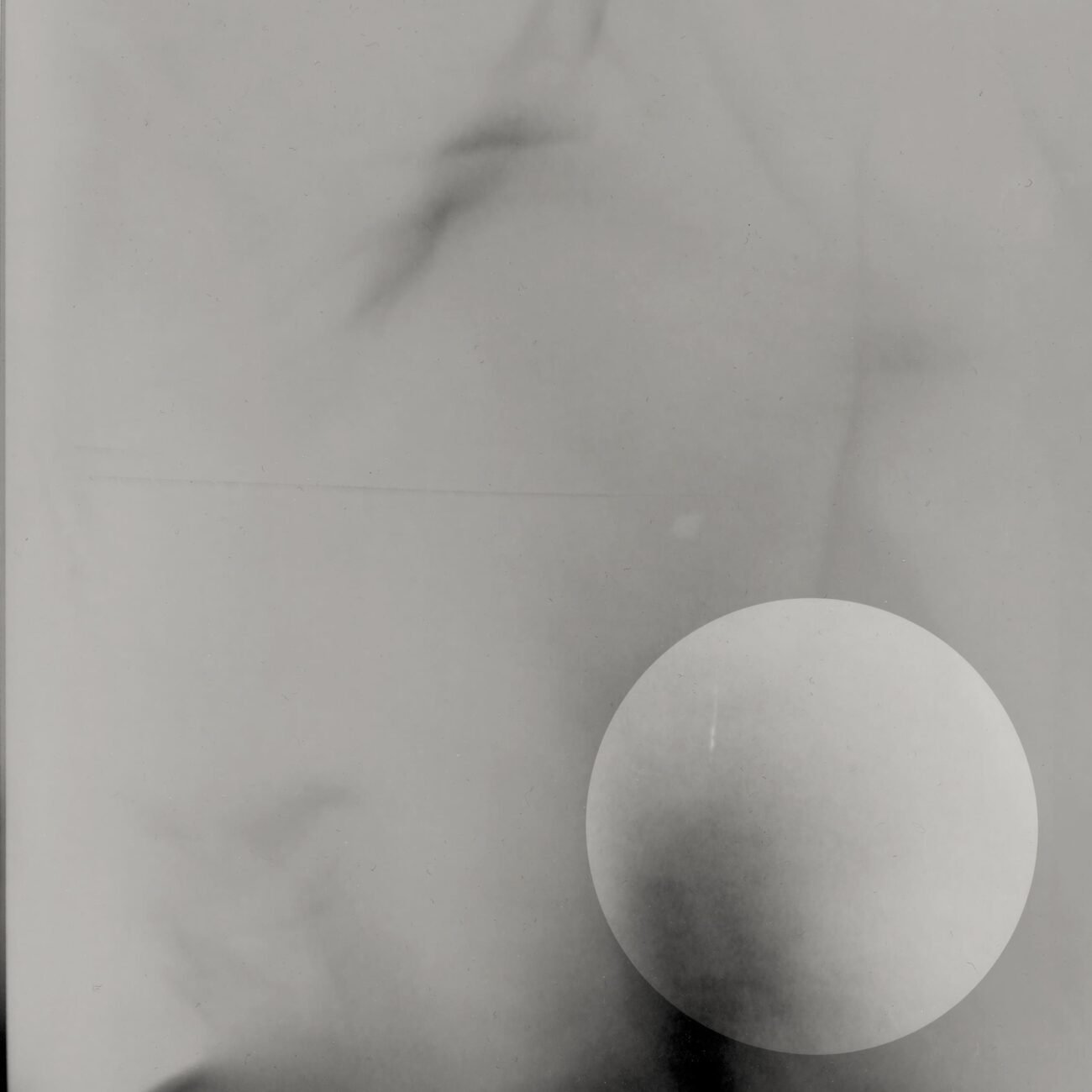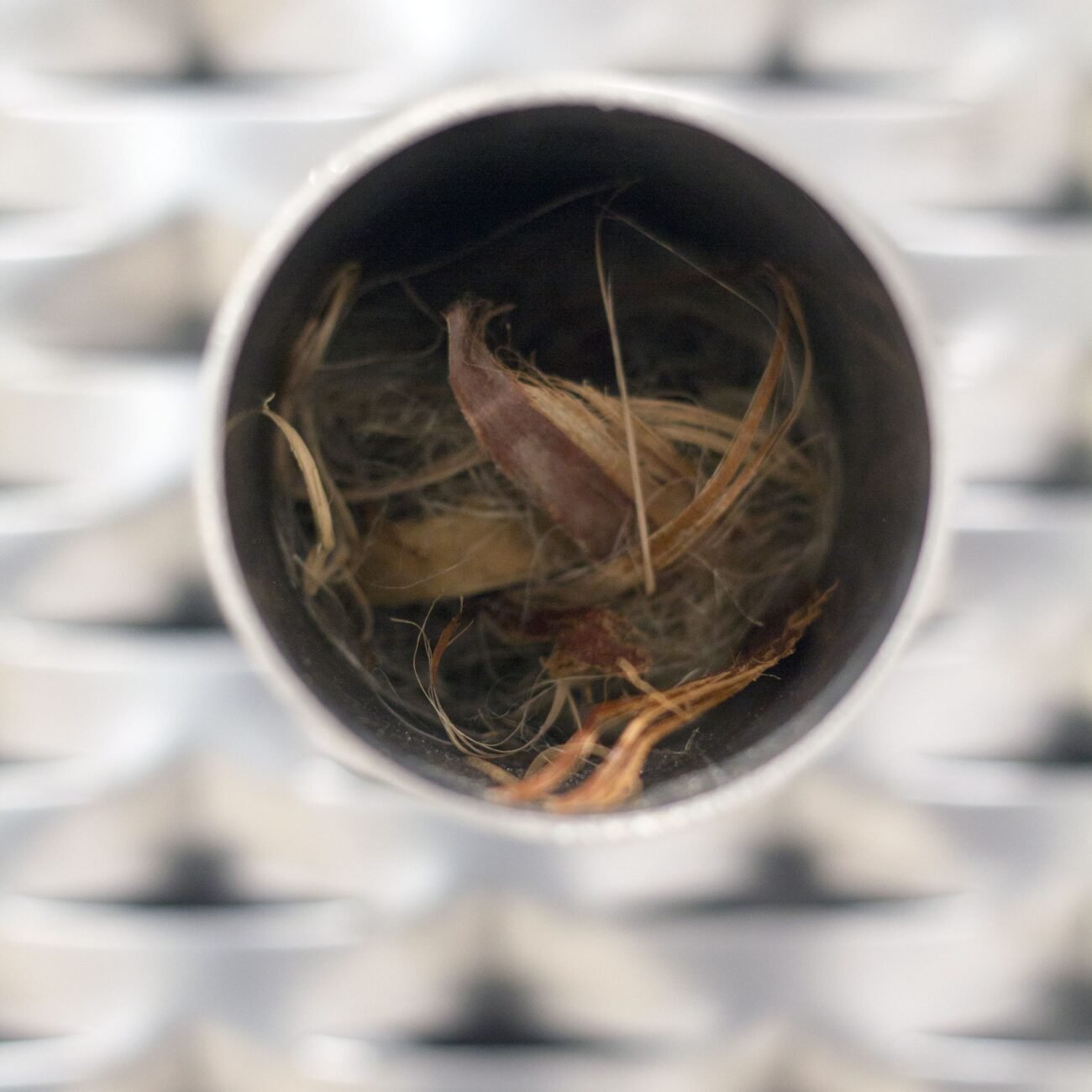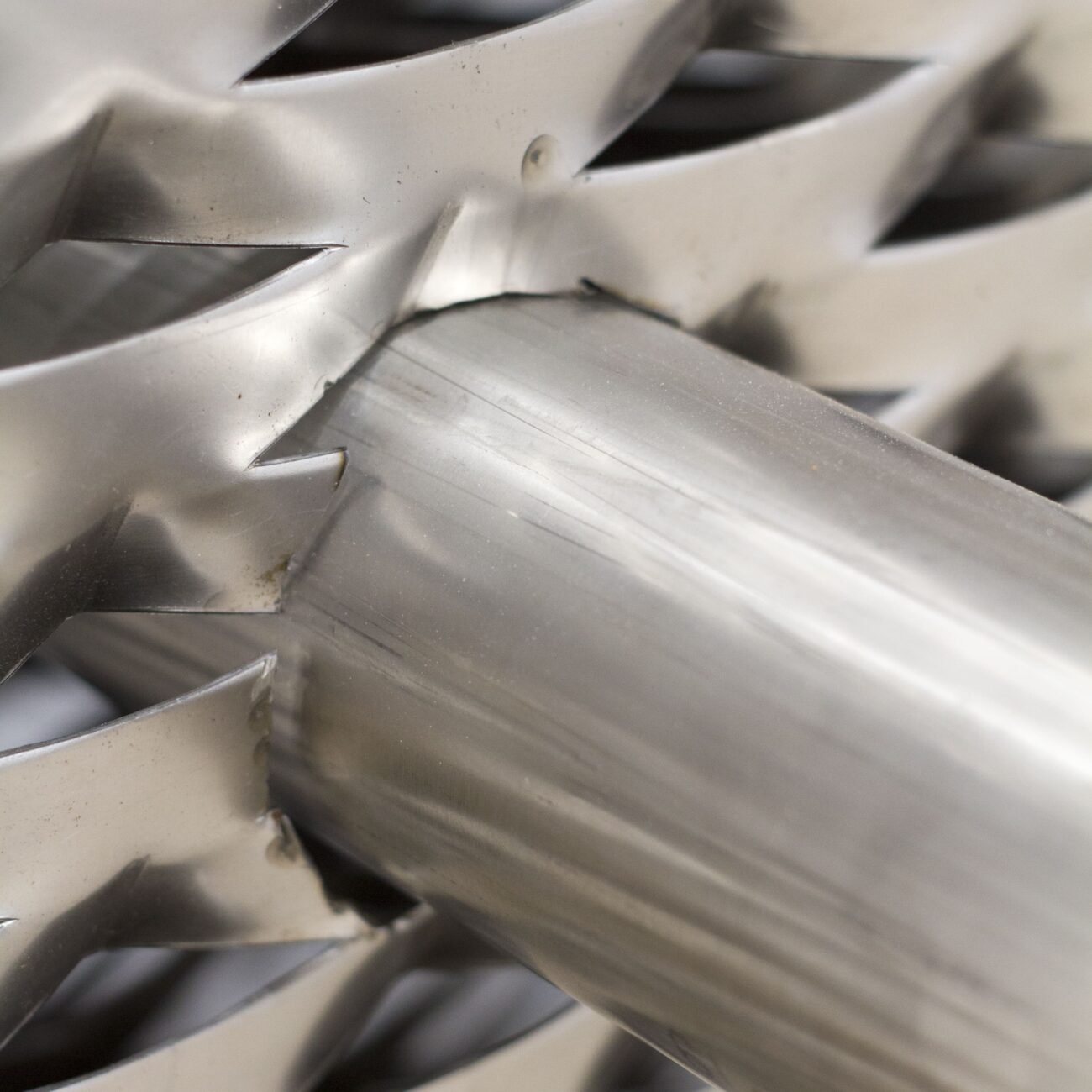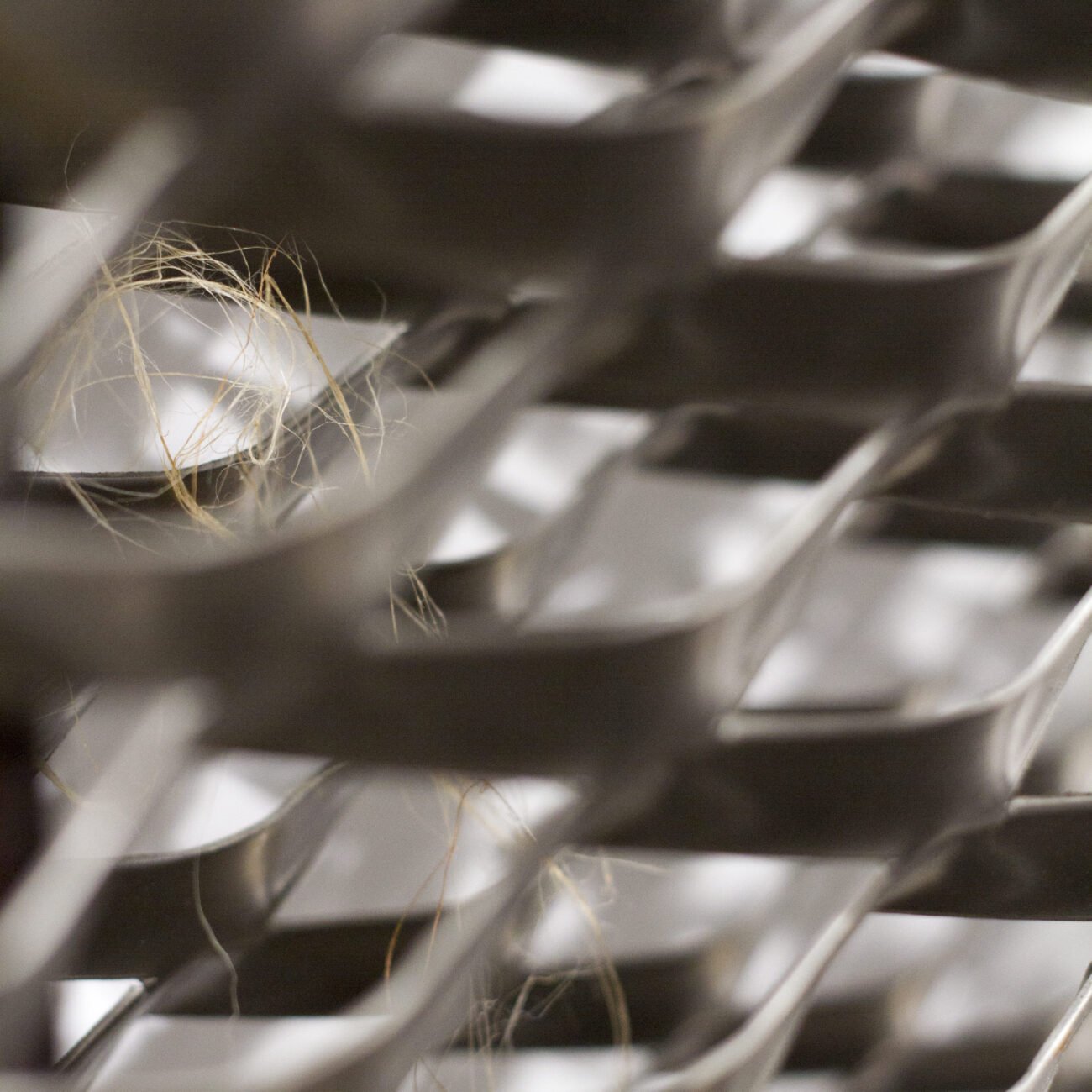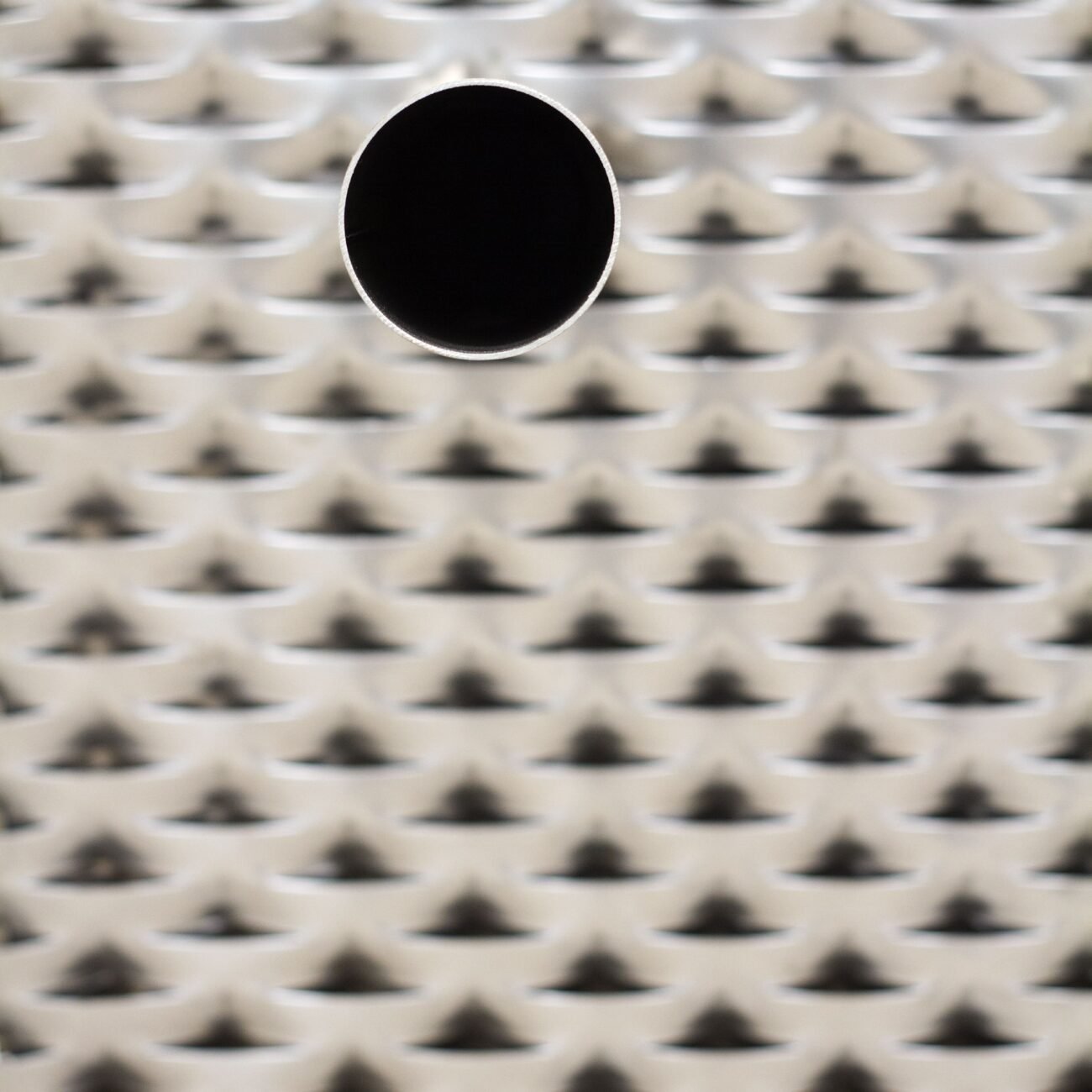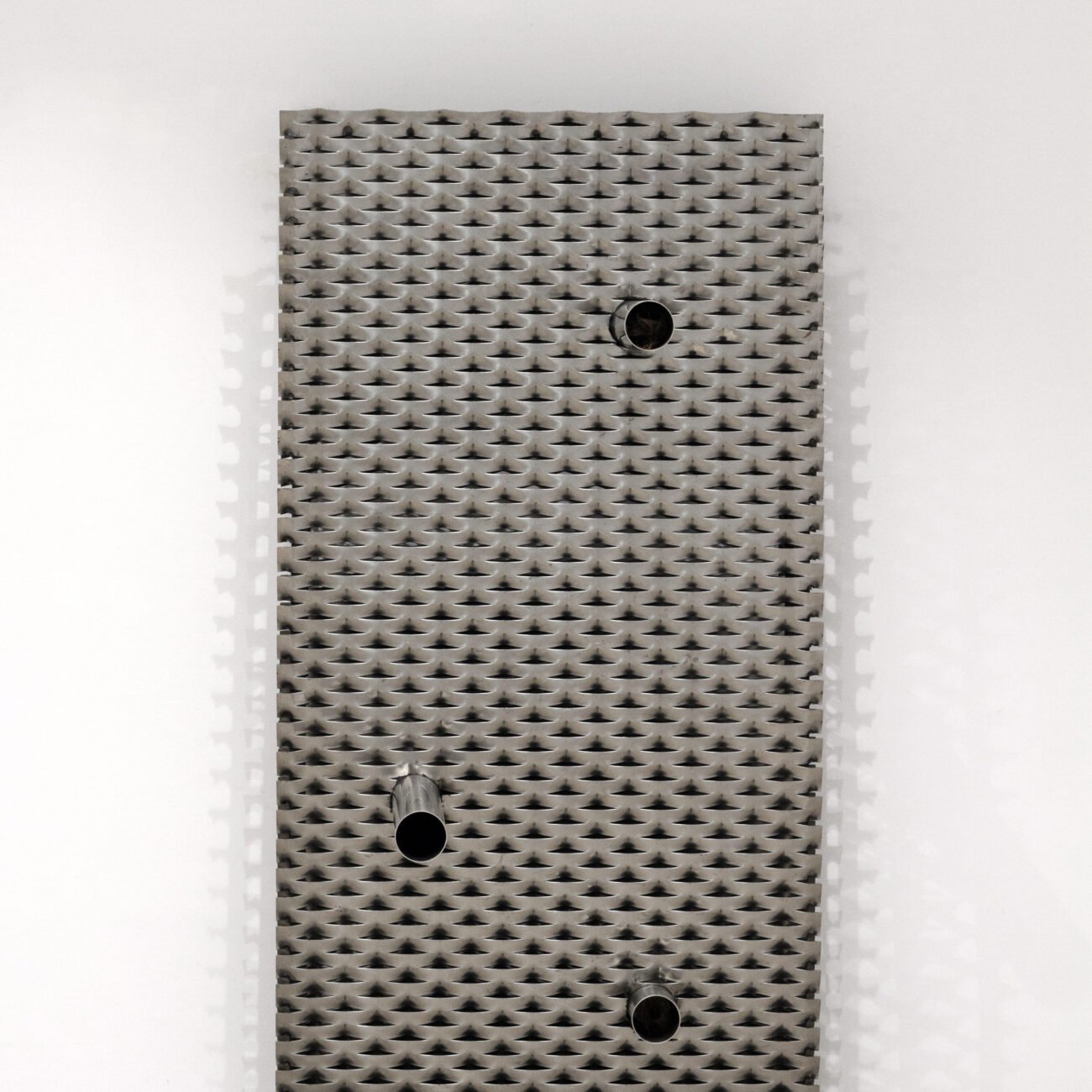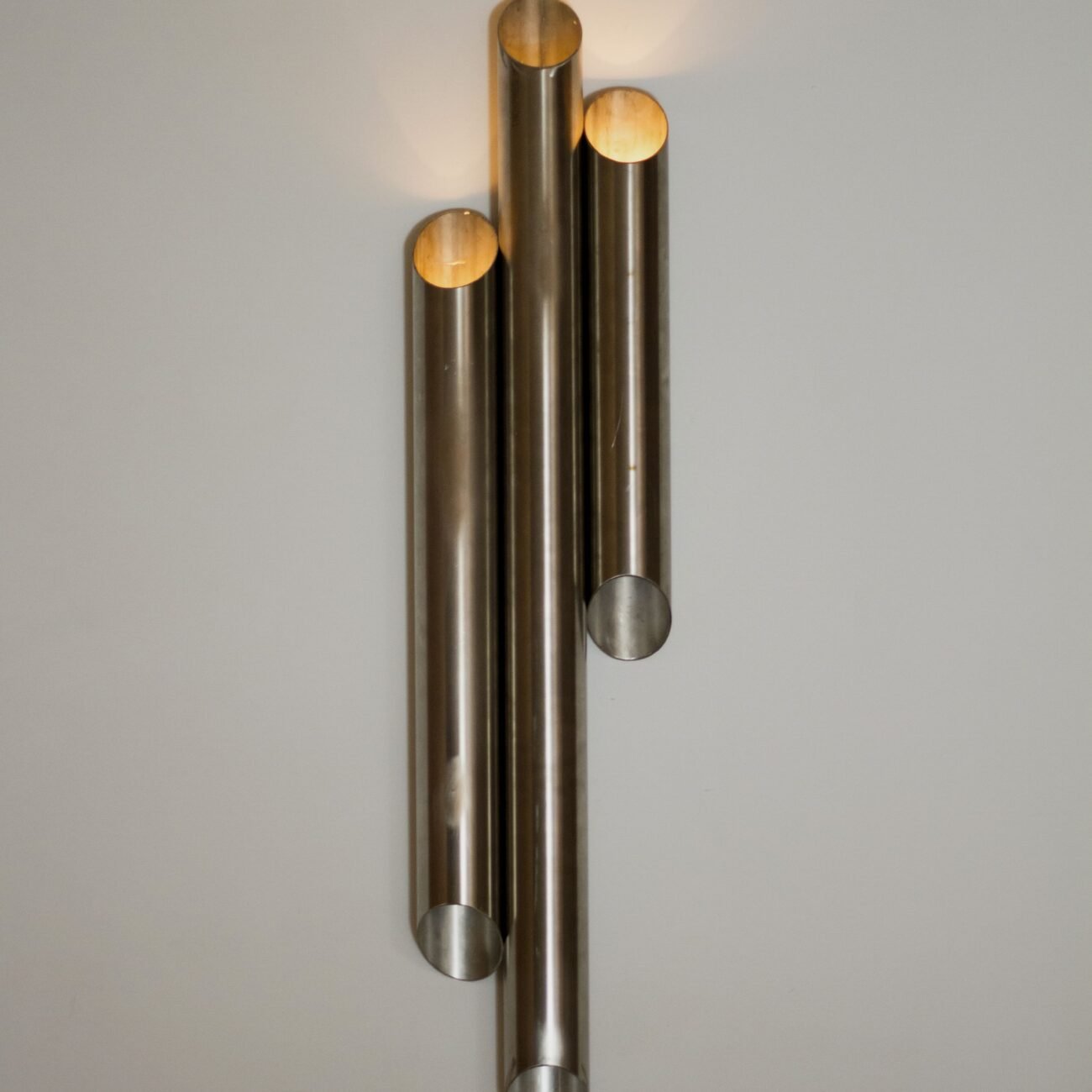Blind man walks
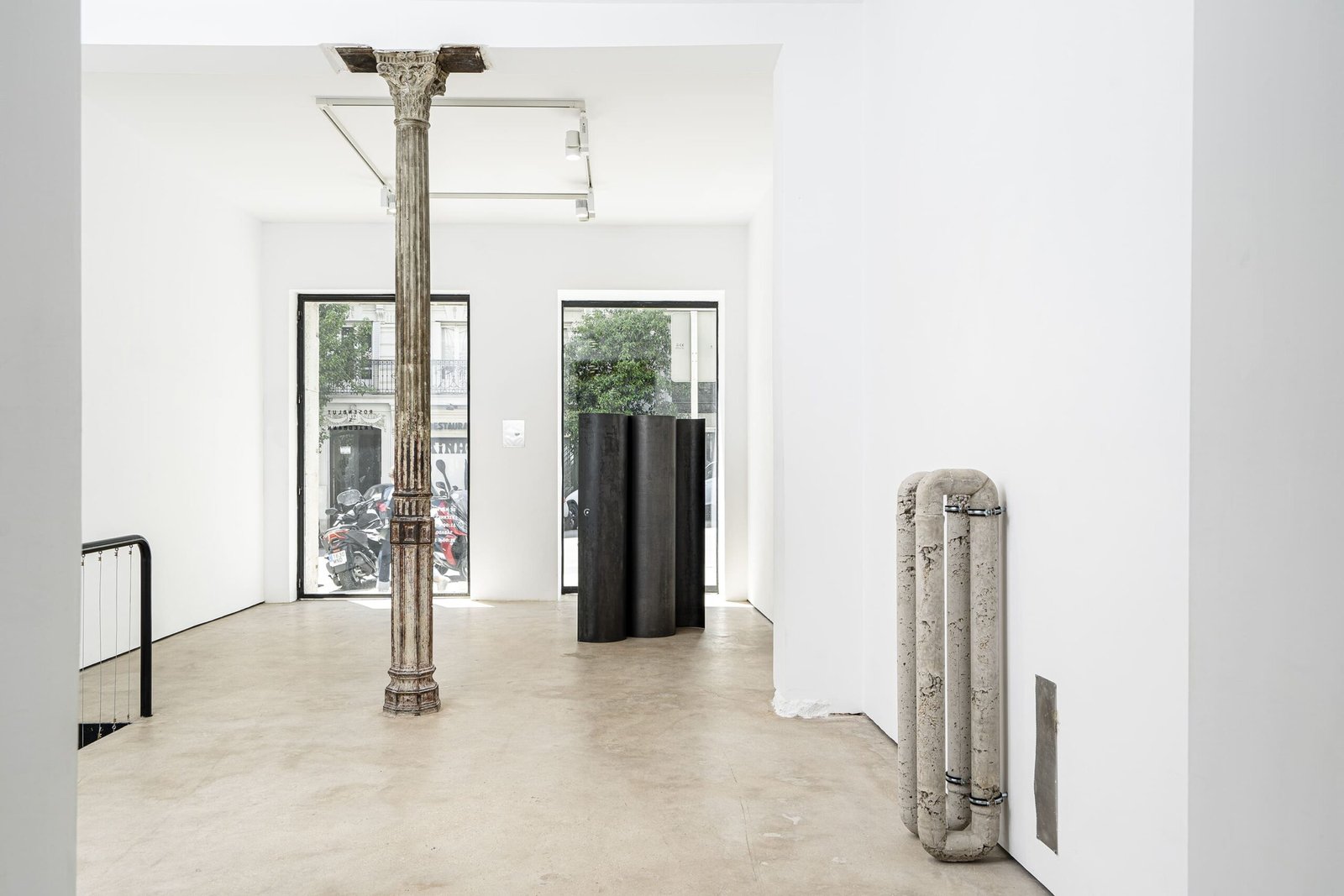
Location and Working Hours
Bárbara de Braganza 9, Madrid. Open daily 11:00-19:00 Monday and Sunday ClosedCurators
Christian LagataBlind man walks: Christian Lagata
Christian Lagata grew up in Jerez and in a coastal town called Rota, which is flanked by a fence behind which the naval base that Franco ceded to the Americans is located. On the one hand, the life of the Andalusian town was going on and, behind the fence, there was another town that looked like those in Hollywood movies. On one side, tradition and, on the other, the American dream. Lagata grew up next to a territory that he could not access but that he could imagine. Looking through a fence or a wall is an archetype anchored in your biography. And in these works.
Intruso and Ojo de noche, presented for the first time, are works that interact with the body and lead us to reproduce that voyeuristic gesture, forcing us to look for what is on the other side. As if we could see through the windows of a building, to discover that inside that cement cube there are loves, boredom, dust and screens. For the artist and anarchitect Gordon Matta Clark – a clear reference for Lagata’s work – utopia is a world full of windows: you make a hole in the building and people can look inside and see how other people live. However, if Matta Clark proposed this solution as a way to reverse the atomization that he noticed in capitalism, Lagata focuses on highlighting the strange cohabitation between the coldness of industrial materials and the warmth of the lives they shelter.
Lagata began his path through photography, however, he missed feeling the materials. Then he immersed himself in the disused spaces in Andalusia, where nature intrudes into the city, and there he found sticks and metals to assemble sculptures. In these spaces, discarded by a system focused on utility, Lagata discovered a serene coexistence between wild vegetation and industrial waste, the raw material for his works.
Sol de fuego thistles I, II and III come from those abandoned sites. They were like a wall that prevented Lagata from moving forward, a natural fence that awakened his desire to go further. A symbol of the territory of his childhood, as if Lagata were capable of opening a vortex in his memory to extract objects that he displays in front of us. Here the metallic thistles transform into a couple or a family lying in a bed, into fossils of the transience of life, into the memory of a hug frozen in time. Resting on a weightless metal bed, the thistles condense the opposites present in Lagata’s work. A cold warmth, a cutting tenderness.
Like thistles, the title of this exhibition also comes from the territory of his childhood. It belongs to the poem Ciego camina el cuerpo idolatrado, by José Manuel Caballero Bonald, a Jerez native, like Lagata, who extracts the materials for his works from experience, from the findings of everyday life. And who is also captivated by windows, keyholes, holes and cracks where the night enters.
The work of the same name Ciego camina is practically a manifesto. In the cold stainless-steel tubes, the raw material of many of his works, there is a candle that illuminates what is hidden, as if the inaccessible spaces that surround us were the representation of that part hidden in our psyche, the physical unconscious of our cities that are visible here. The work has a subtitle that could also be that of this exhibition: San Isidro/Jerez: Lagata’s journey from the workshop where she works today to the land of his childhood.
In Metal del verano, however, we see the rayogram of the entrance to one of the tubes. It is the gap that allows us to see beyond, but that on the photographic paper is obscured until we are denied the vision of what is at the other end of the tube. It is the negative of the experience, the opening that hides.
Memory is minimalist – a museum of broken mirrors, Borges would say – isolated images, lacking syntax that, even so, condense a story. The works in this exhibition have, like memories, the ability to convey a lot with very little. They are fragments of Lagata’s memory that awaken collective associations. Paraphrasing the English writer J.G. Ballard—another of his references—if all members of the human species disappeared, our successors could reconstruct Lagata’s history (and ours) from his works.
Alan Meller

